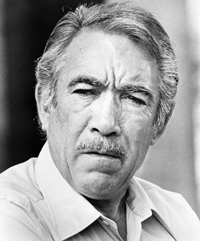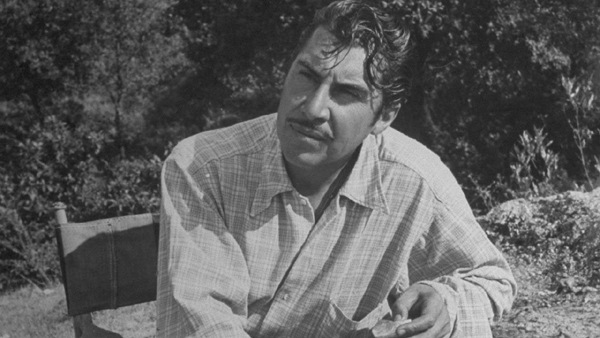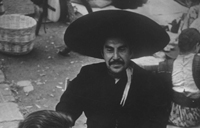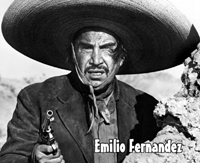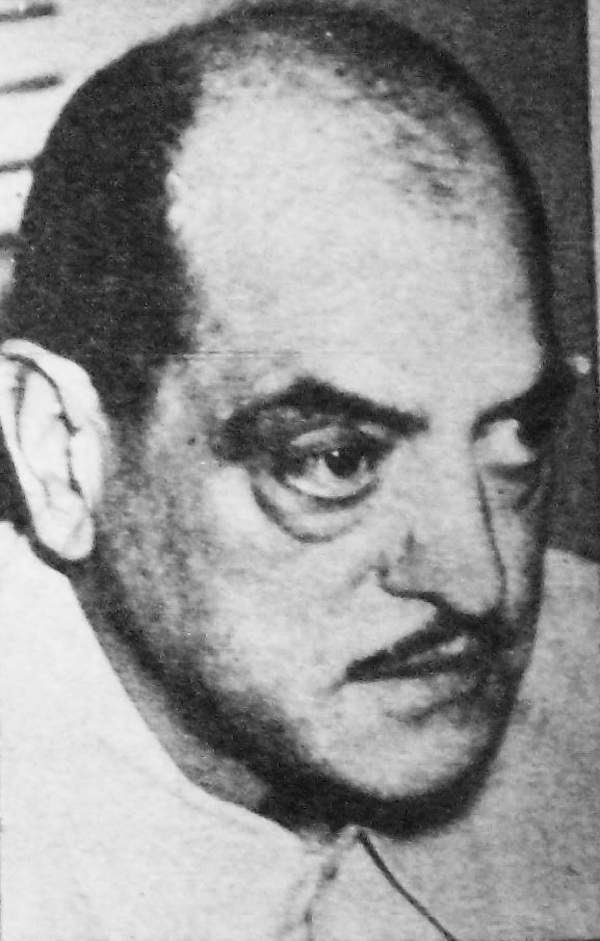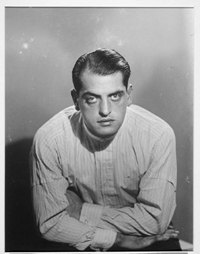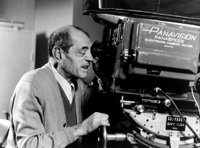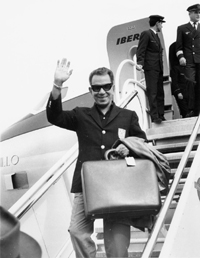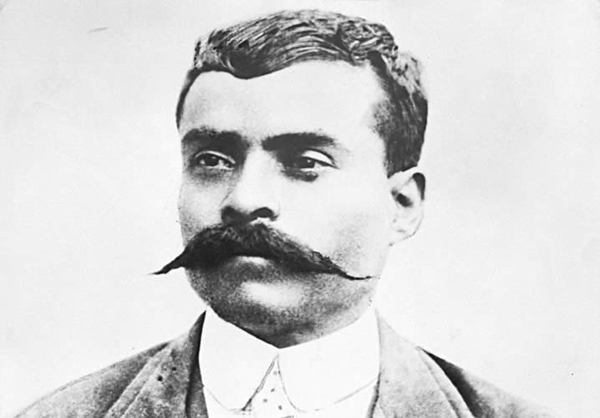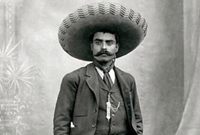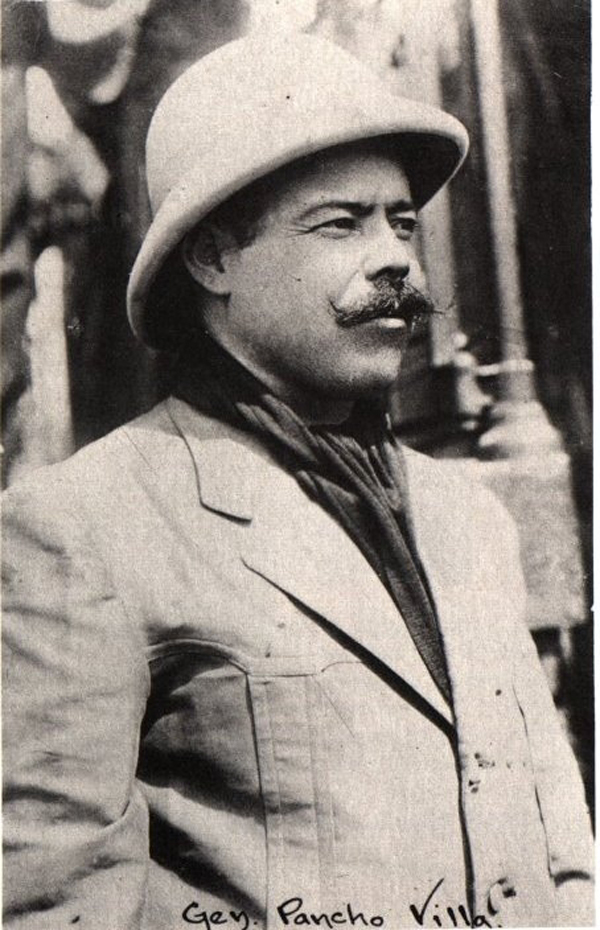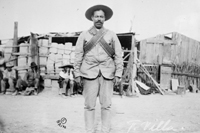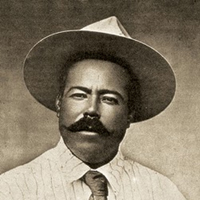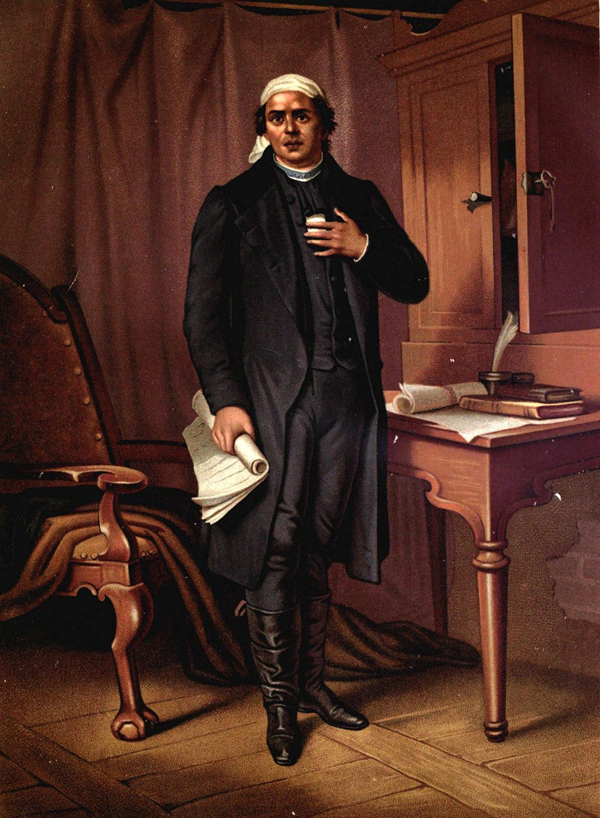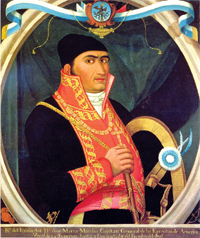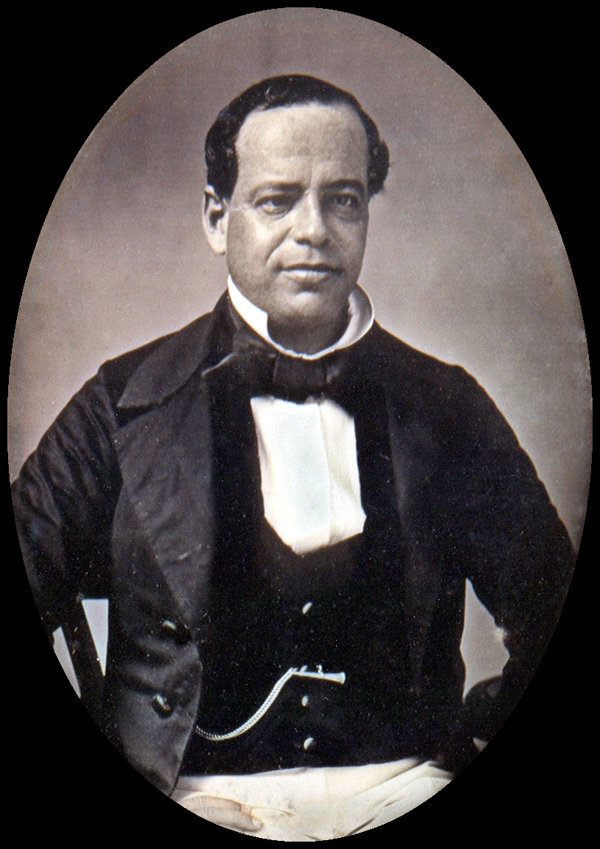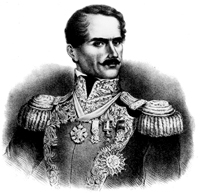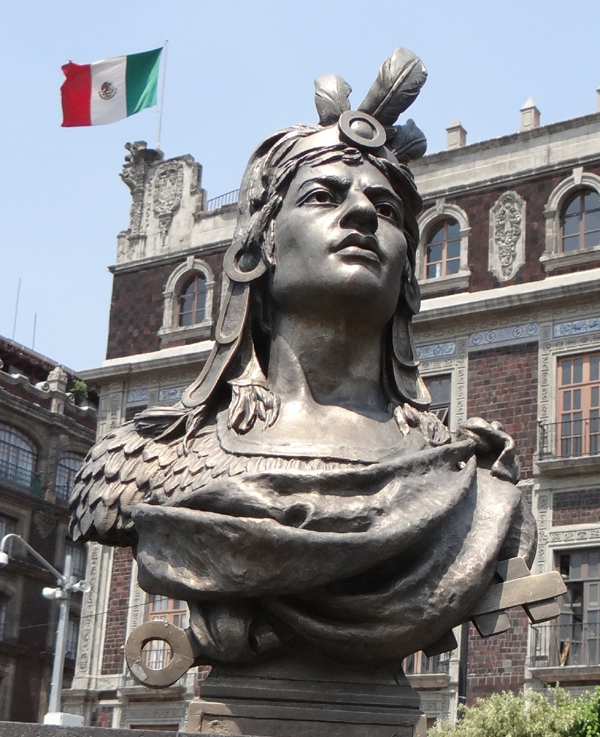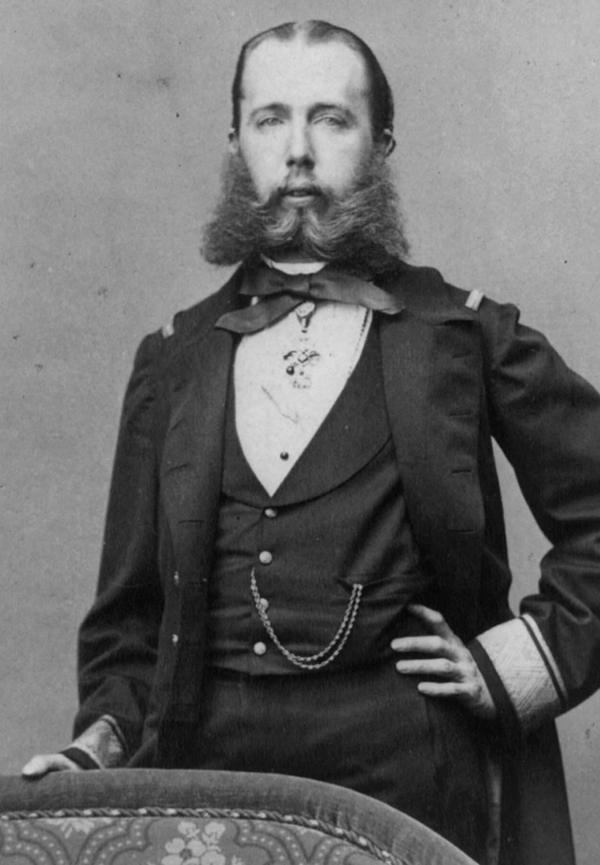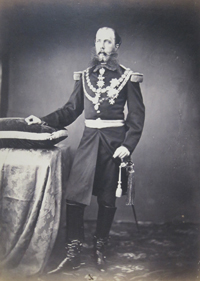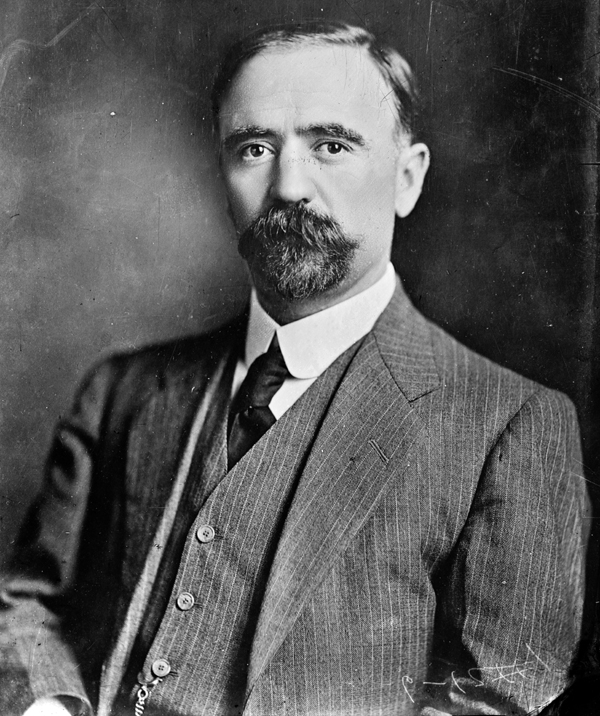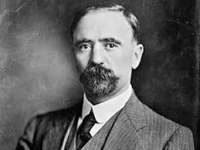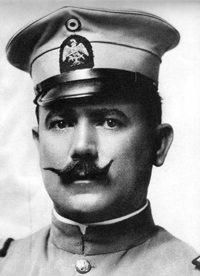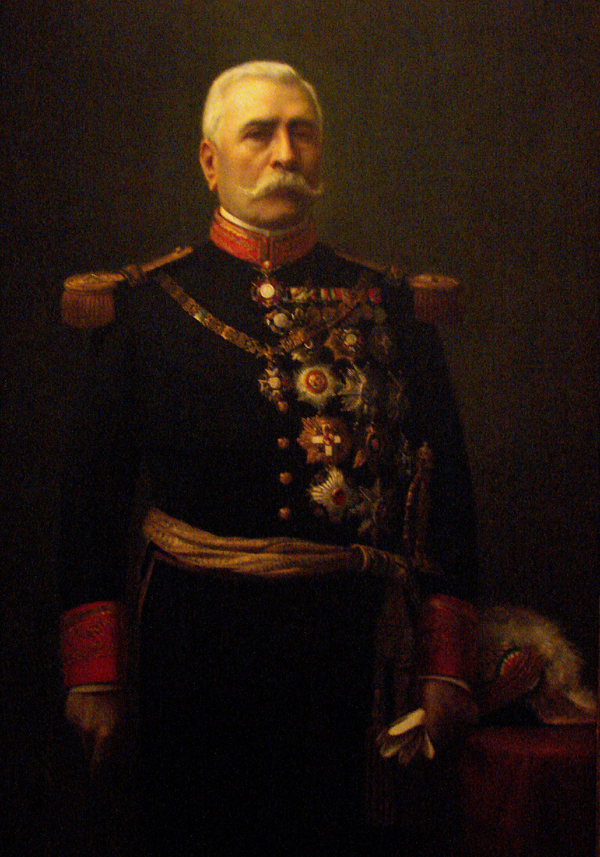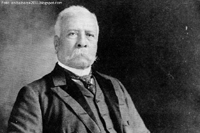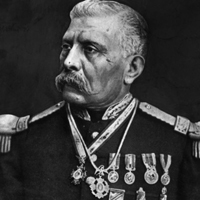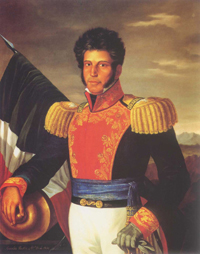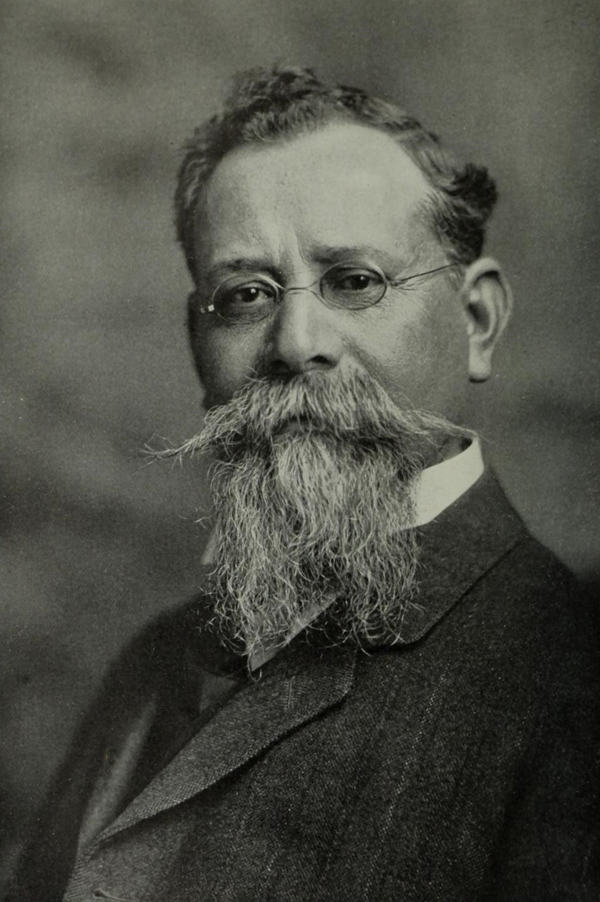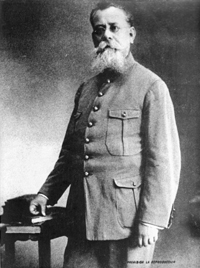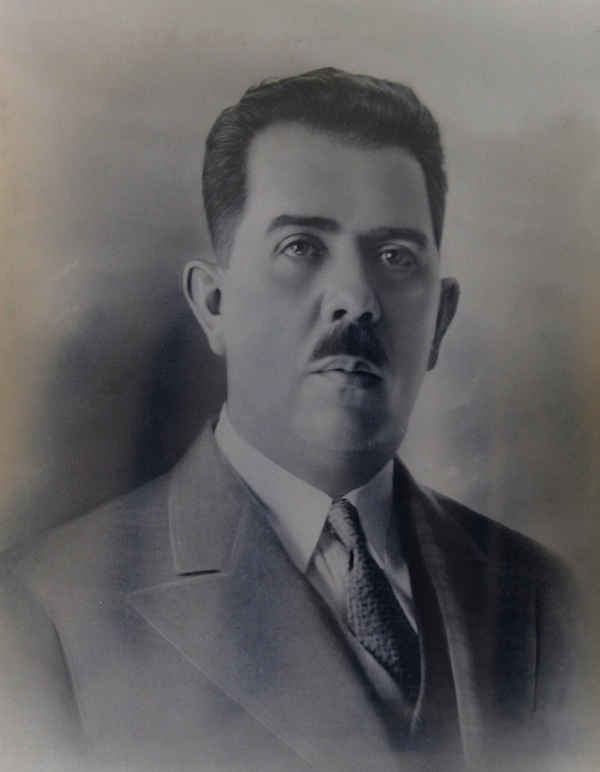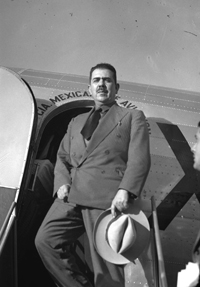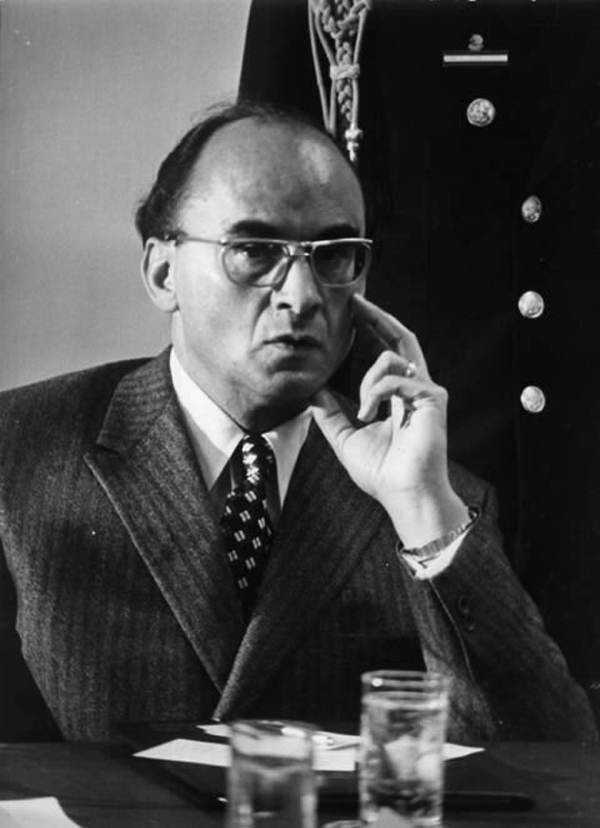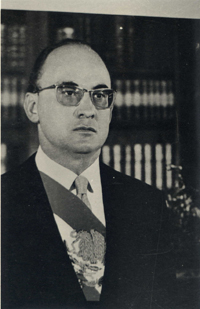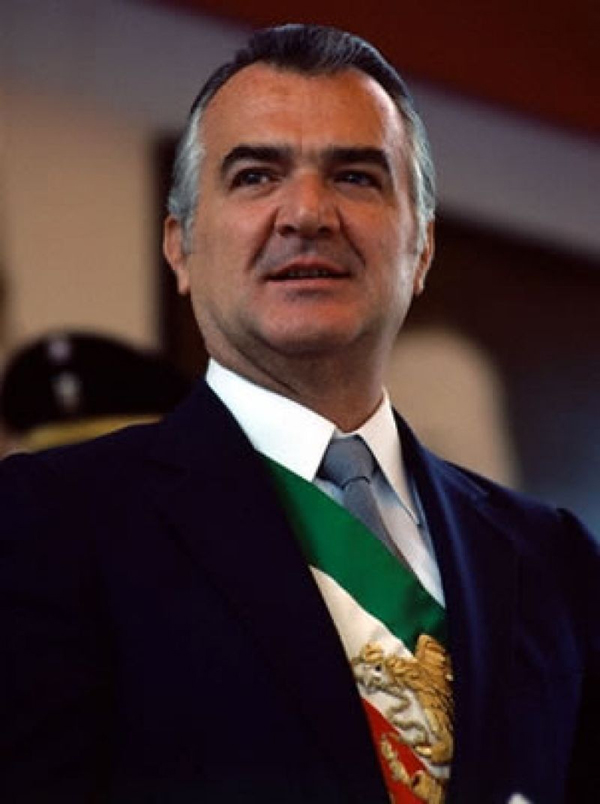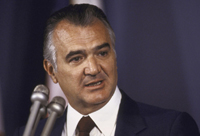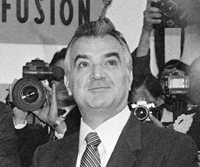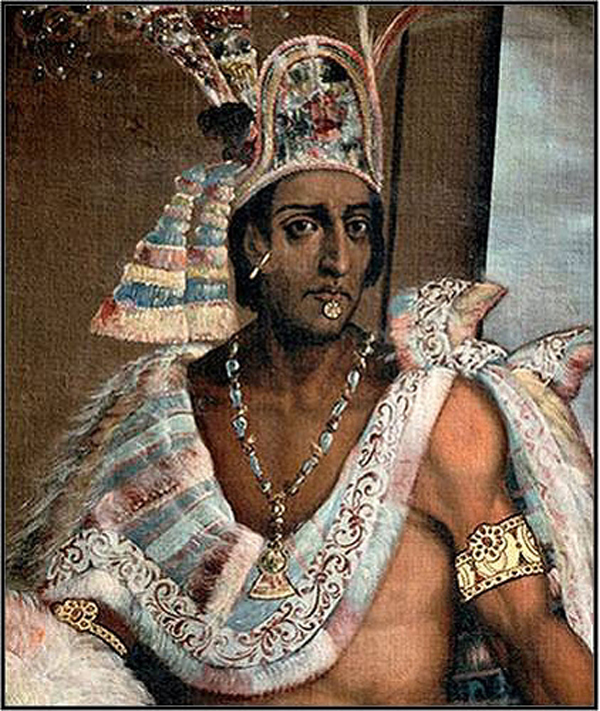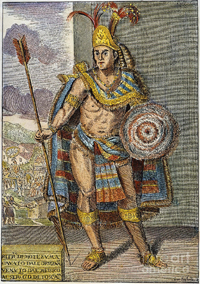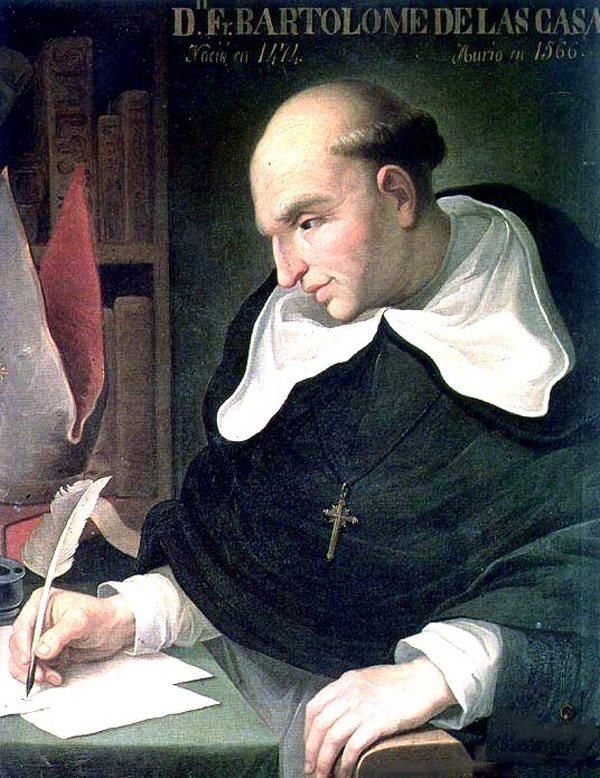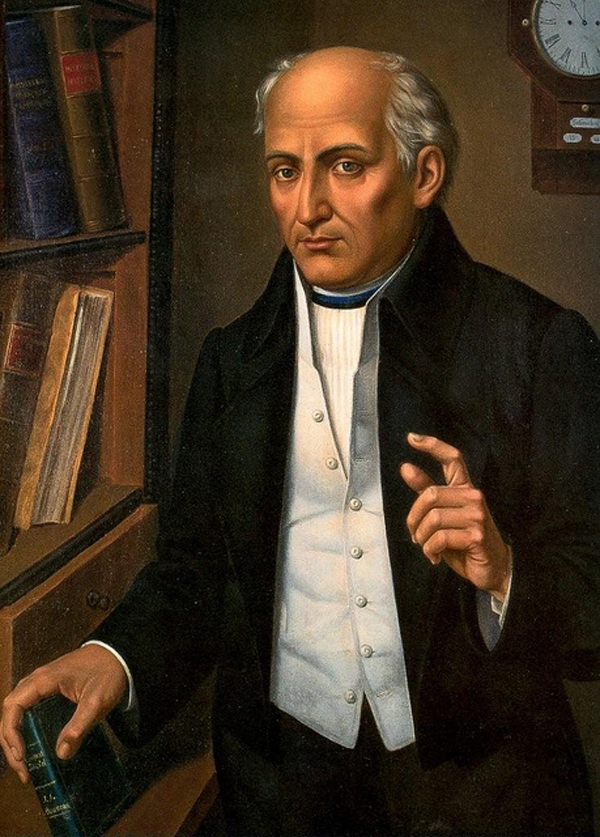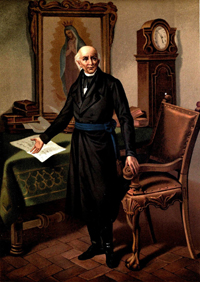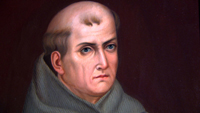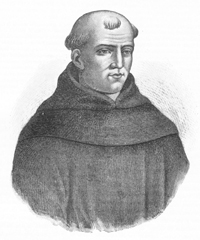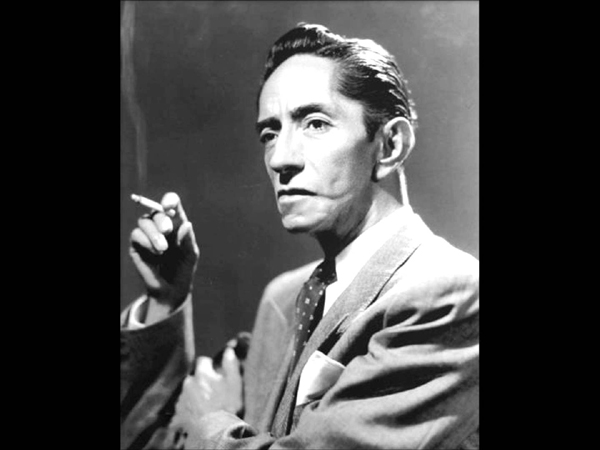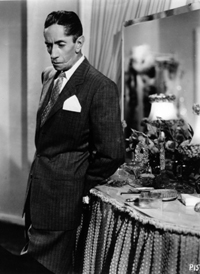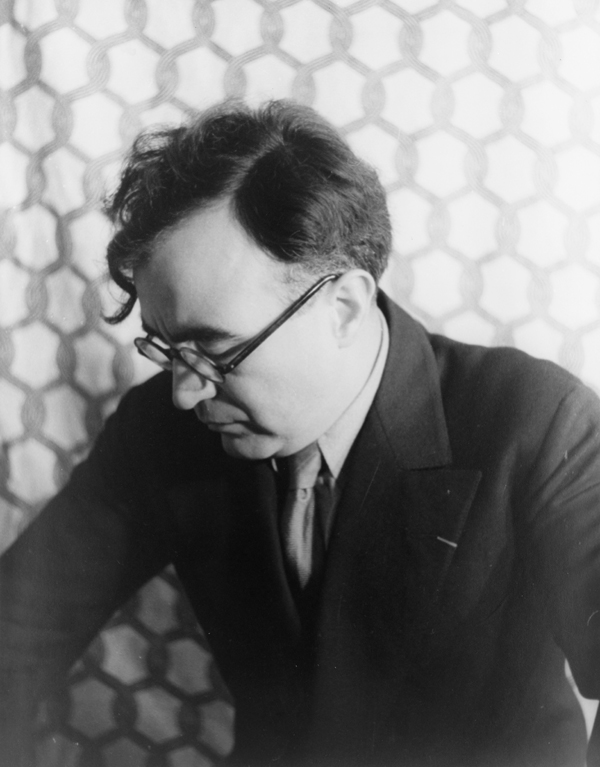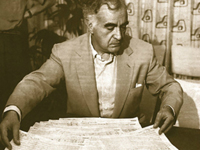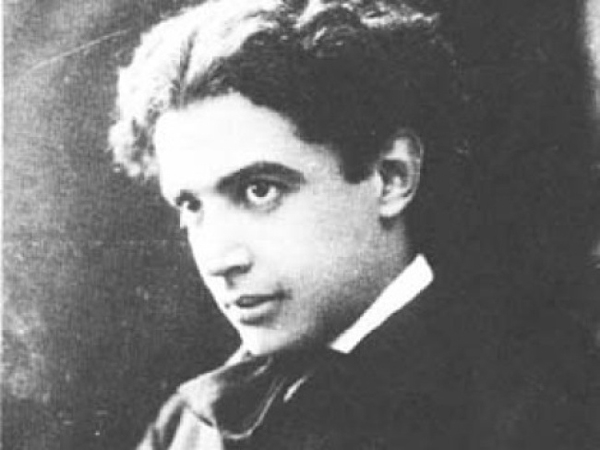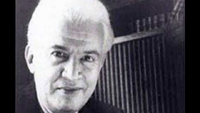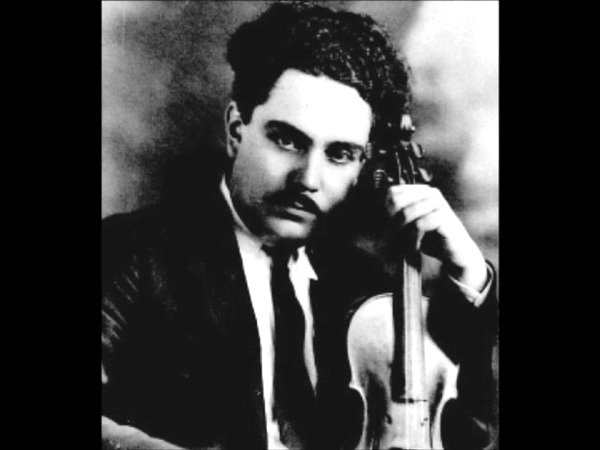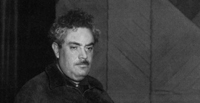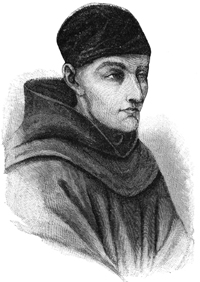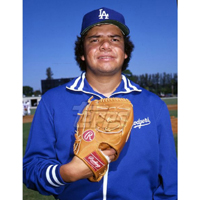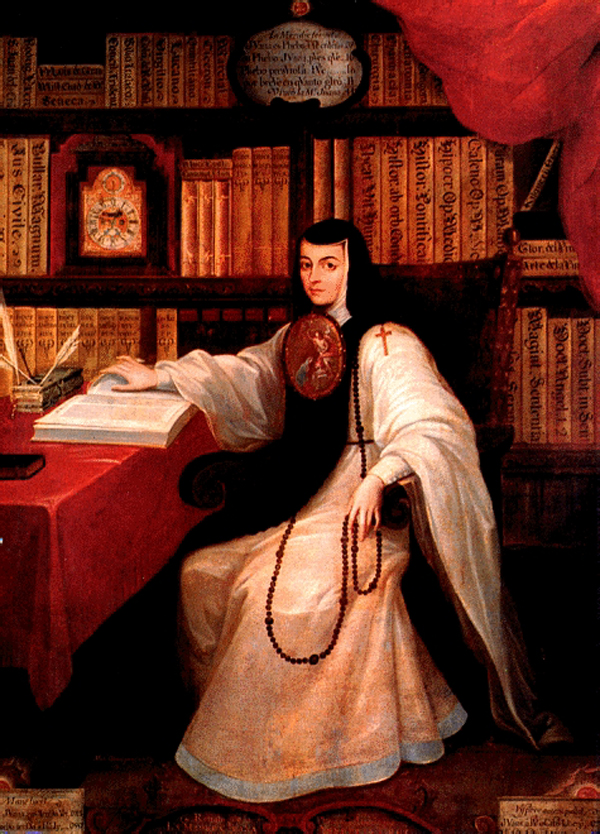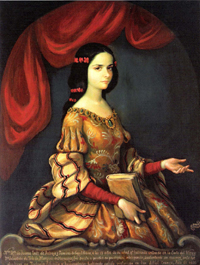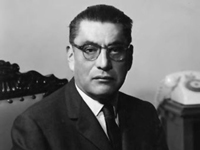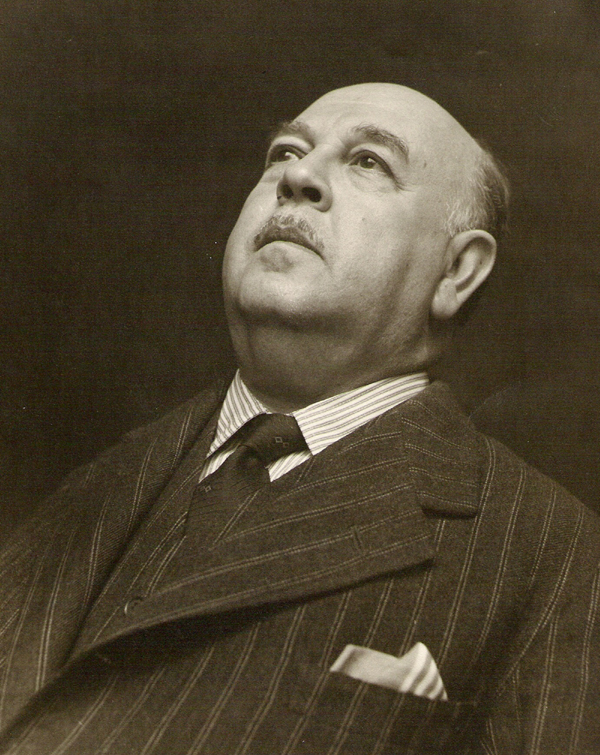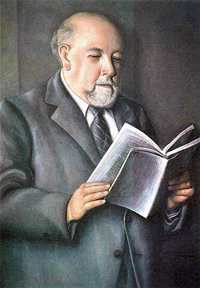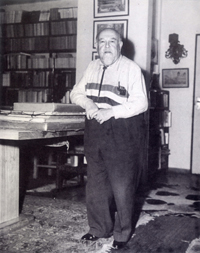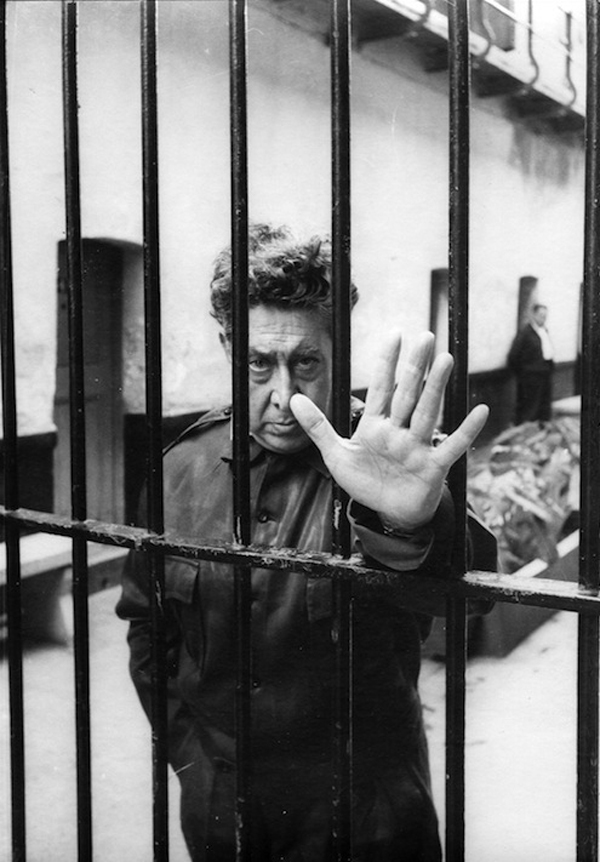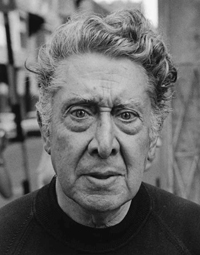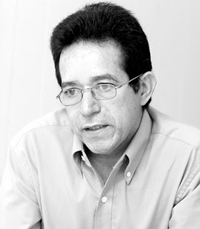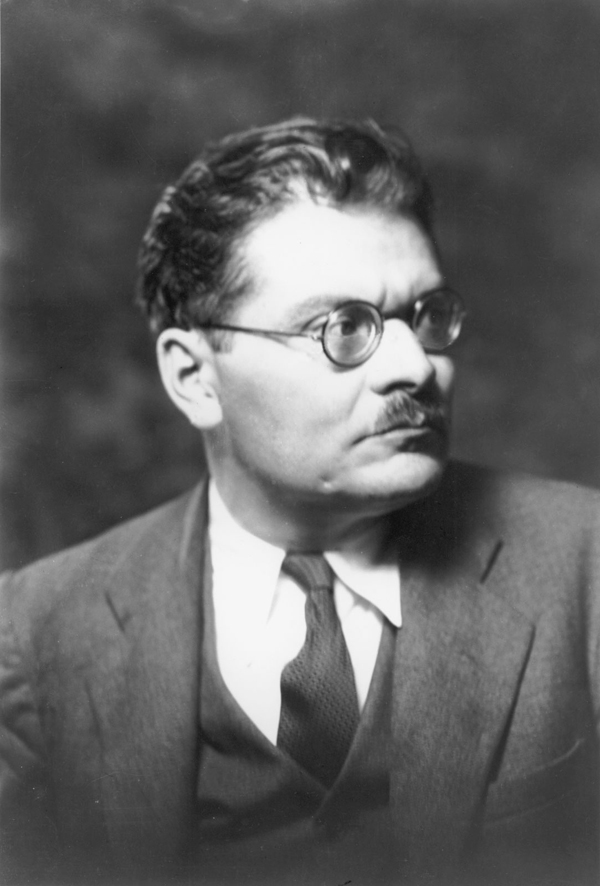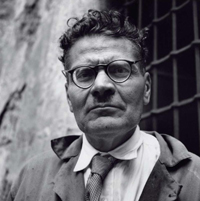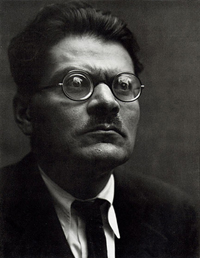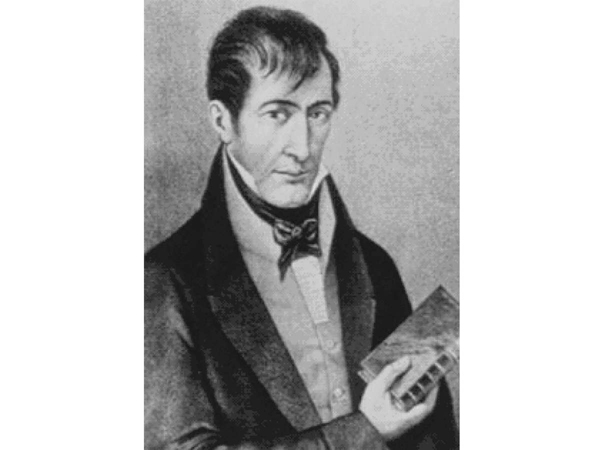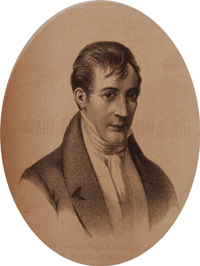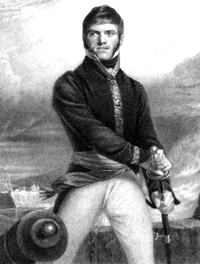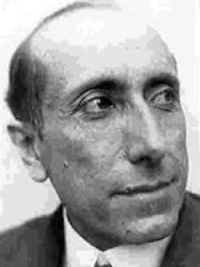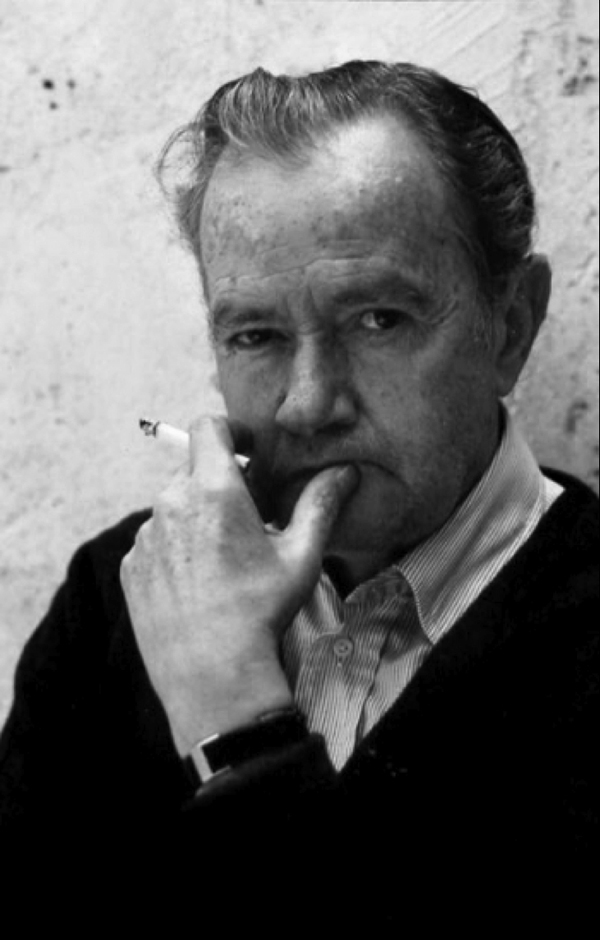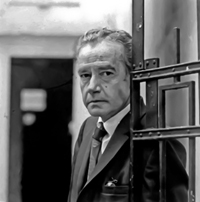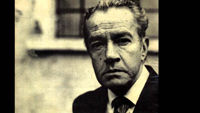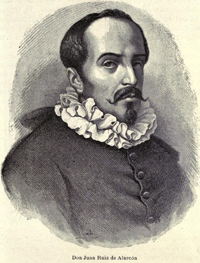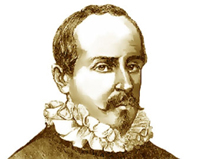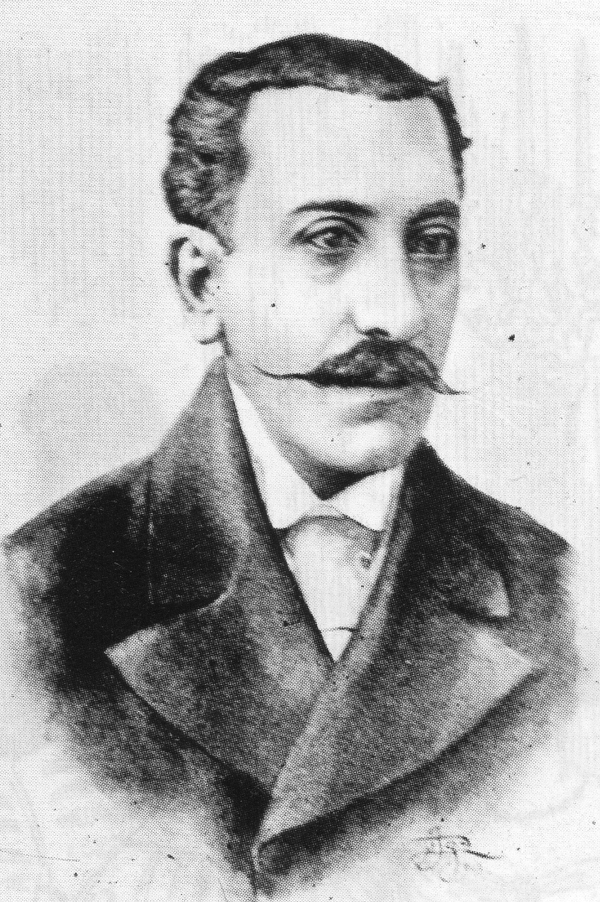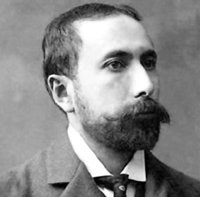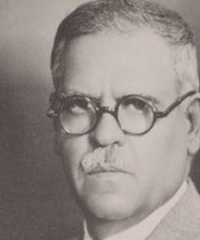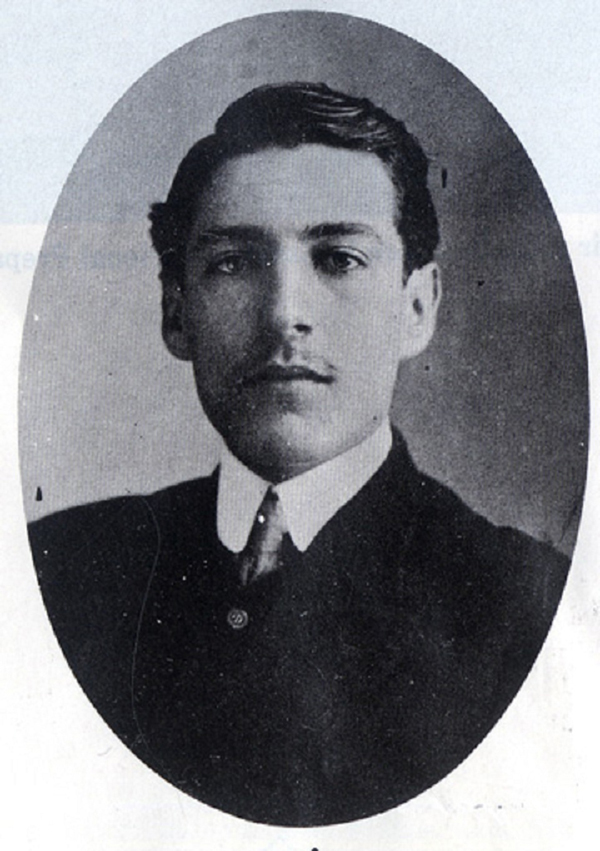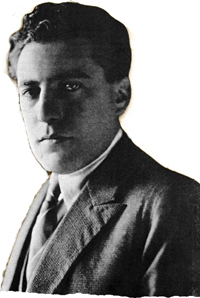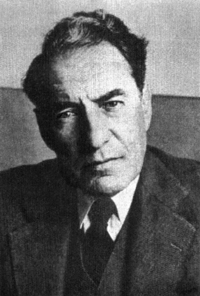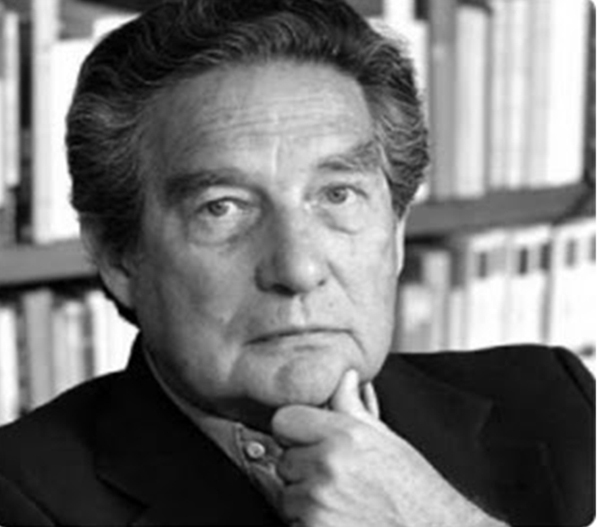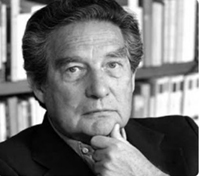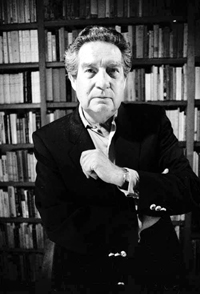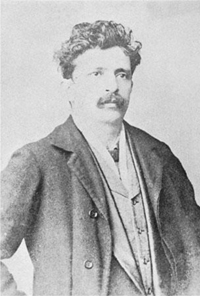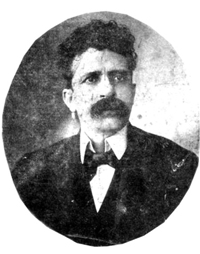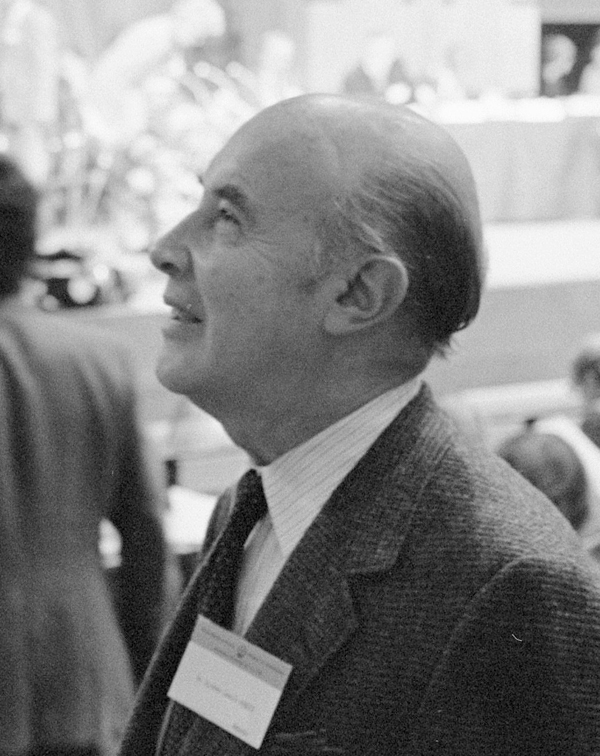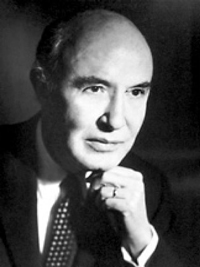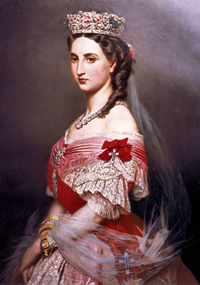History
Movie, Film, TV, & Theater
Antonio Rodolfo Quinn Oaxaca
Field of Interest: Actor, painter, writer, film director
Known For: La Strada (1954), Viva Zapata! (1952), Lust for Life (1956), The Guns of Navarone (1961), Zorba the Greek (1964), Lawrence of Arabia (1962), The Message (1976), Lion of the Desert (1981) Significant figures in the motion picture industry are the comedian Cantinflas (Mario Moreno, 1911–93), Mexican-born actor Anthony Rudolph Oaxaca Quinn (1916–2001), and directors Emilio Fernández (1904–86) and Spanish-born Luis Buñuel (1900–83).Antonio Rodolfo Quinn Oaxaca was a Mexican-born American actor, painter and writer. He starred in numerous critically acclaimed and commercially successful films, including La Strada, The Guns of Navarone, Zorba the Greek, Guns for San Sebastian, Lawrence of Arabia, The Message and Lion of the Desert. He won the Academy Award for Best Supporting Actor twice: for Viva Zapata! in 1952 and Lust for Life in 1956.
Country: Mexico
Date of Birth: 21 April 1915
Place of Birth: Chihuahua, Mexico
Date of Death: 3 June 2001
Please of Death: Boston, Massachusetts, U.S.
Spouse: Katherine DeMille (m. 1937; div. 1965), Jolanda Addolori (m. 1966; div. 1997), Kathy Benvin (m. 1997; wid. 2001)
Known For: La Strada (1954), Viva Zapata! (1952), Lust for Life (1956), The Guns of Navarone (1961), Zorba the Greek (1964), Lawrence of Arabia (1962), The Message (1976), Lion of the Desert (1981) Significant figures in the motion picture industry are the comedian Cantinflas (Mario Moreno, 1911–93), Mexican-born actor Anthony Rudolph Oaxaca Quinn (1916–2001), and directors Emilio Fernández (1904–86) and Spanish-born Luis Buñuel (1900–83).Antonio Rodolfo Quinn Oaxaca was a Mexican-born American actor, painter and writer. He starred in numerous critically acclaimed and commercially successful films, including La Strada, The Guns of Navarone, Zorba the Greek, Guns for San Sebastian, Lawrence of Arabia, The Message and Lion of the Desert. He won the Academy Award for Best Supporting Actor twice: for Viva Zapata! in 1952 and Lust for Life in 1956.
Country: Mexico
Date of Birth: 21 April 1915
Place of Birth: Chihuahua, Mexico
Date of Death: 3 June 2001
Please of Death: Boston, Massachusetts, U.S.
Spouse: Katherine DeMille (m. 1937; div. 1965), Jolanda Addolori (m. 1966; div. 1997), Kathy Benvin (m. 1997; wid. 2001)
Emilio "El Indio" Fernández
Field of Interest: Film director, actor and screenwriter
Known For: Maria Candelaria (1943)Significant figures in the motion picture industry are the comedian Cantinflas (Mario Moreno, 1911–93), Mexican-born actor Anthony Rudolph Oaxaca Quinn (1916–2001), and directors Emilio Fernández (1904–86) and Spanish-born Luis Buñuel (1900–83).Emilio "El Indio" Fernández was a Mexican film director, actor and screenwriter. He was one of the most prolific film directors of the Golden Age of Mexican cinema in the 1940s and 1950s. He is best known for his work as director of the film Maria Candelaria, which won the Palme d'Or award at the 1946 Cannes Film Festival. As an actor, he worked in numerous film productions of Mexico and also in Hollywood.
Country: Mexico
Date of Birth: 26 March 1904
Place of Birth: Hondo, Coahuila, Mexico
Date of Death: 6 August 1986
Please of Death: Mexico City, Mexico
Spouse: Gladys Fernández, Columba Domínguez
Known For: Maria Candelaria (1943)Significant figures in the motion picture industry are the comedian Cantinflas (Mario Moreno, 1911–93), Mexican-born actor Anthony Rudolph Oaxaca Quinn (1916–2001), and directors Emilio Fernández (1904–86) and Spanish-born Luis Buñuel (1900–83).Emilio "El Indio" Fernández was a Mexican film director, actor and screenwriter. He was one of the most prolific film directors of the Golden Age of Mexican cinema in the 1940s and 1950s. He is best known for his work as director of the film Maria Candelaria, which won the Palme d'Or award at the 1946 Cannes Film Festival. As an actor, he worked in numerous film productions of Mexico and also in Hollywood.
Country: Mexico
Date of Birth: 26 March 1904
Place of Birth: Hondo, Coahuila, Mexico
Date of Death: 6 August 1986
Please of Death: Mexico City, Mexico
Spouse: Gladys Fernández, Columba Domínguez
Luis Buñuel Portolés
Field of Interest: Filmmaker
Known For: Los olvidados (1950), Susana (aka The Devil and the Flesh) (1951), Subida al cielo (1952), Él (1953), The Adventures of Robinson Crusoe (1954), Ensayo de un crimen (1955), Nazarín (1959), Viridiana (1961), El ángel exterminador (1962), Le journal d'une femme de chambre (1964), Simón del desierto (1965), Belle de jour (1967), La Voie Lactée (1969), Tristana (1970), Le charme discret de la bourgeoisie (The Discreet Charm of the Bourgeoisie) (1972), Cet obscur objet du désir (That Obscure Object of Desire) (1977)Significant figures in the motion picture industry are the comedian Cantinflas (Mario Moreno, 1911–93), Mexican-born actor Anthony Rudolph Oaxaca Quinn (1916–2001), and directors Emilio Fernández (1904–86) and Spanish-born Luis Buñuel (1900–83).Luis Buñuel Portolés was a spanish filmmaker who worked in Spain, Mexico and France. When Luis Buñuel died at age 83, his obituary in the New York Times called him "an iconoclast, moralist, and revolutionary who was a leader of avant-garde surrealism in his youth and a dominant international movie director half a century later". His first picture—made in the silent era—was called "the most famous short film ever made" by critic Roger Ebert, and his last film—made 48 years later—won him Best Director awards from the National Board of Review and the National Society of Film Critics. Writer Octavio Paz called Buñuel's work "the marriage of the film image to the poetic image, creating a new reality...scandalous and subversive".
Country: Mexico
Date of Birth: 22 February 1900
Place of Birth: Calanda, Teruel, Spain
Date of Death: 29 July 1983
Please of Death: Mexico City, Mexico
Spouse: Jeanne Buñuel
Known For: Los olvidados (1950), Susana (aka The Devil and the Flesh) (1951), Subida al cielo (1952), Él (1953), The Adventures of Robinson Crusoe (1954), Ensayo de un crimen (1955), Nazarín (1959), Viridiana (1961), El ángel exterminador (1962), Le journal d'une femme de chambre (1964), Simón del desierto (1965), Belle de jour (1967), La Voie Lactée (1969), Tristana (1970), Le charme discret de la bourgeoisie (The Discreet Charm of the Bourgeoisie) (1972), Cet obscur objet du désir (That Obscure Object of Desire) (1977)Significant figures in the motion picture industry are the comedian Cantinflas (Mario Moreno, 1911–93), Mexican-born actor Anthony Rudolph Oaxaca Quinn (1916–2001), and directors Emilio Fernández (1904–86) and Spanish-born Luis Buñuel (1900–83).Luis Buñuel Portolés was a spanish filmmaker who worked in Spain, Mexico and France. When Luis Buñuel died at age 83, his obituary in the New York Times called him "an iconoclast, moralist, and revolutionary who was a leader of avant-garde surrealism in his youth and a dominant international movie director half a century later". His first picture—made in the silent era—was called "the most famous short film ever made" by critic Roger Ebert, and his last film—made 48 years later—won him Best Director awards from the National Board of Review and the National Society of Film Critics. Writer Octavio Paz called Buñuel's work "the marriage of the film image to the poetic image, creating a new reality...scandalous and subversive".
Country: Mexico
Date of Birth: 22 February 1900
Place of Birth: Calanda, Teruel, Spain
Date of Death: 29 July 1983
Please of Death: Mexico City, Mexico
Spouse: Jeanne Buñuel
Mario Fortino Alfonso Moreno Reyes
Field of Interest: Comic film actor
Known For: Don Quijote cabalga de nuevo (1972), Su excelencia (1966), El analfabeto (1960), Around the World in 80 Days (1956)Significant figures in the motion picture industry are the comedian Cantinflas (Mario Moreno, 1911–93), Mexican-born actor Anthony Rudolph Oaxaca Quinn (1916–2001), and directors Emilio Fernández (1904–86) and Spanish-born Luis Buñuel (1900–83).Mario Fortino Alfonso Moreno Reyes, was a Mexican comic film actor, producer, and screenwriter. He often portrayed impoverished campesinos or a peasant of pelado origin. The character came to be associated with the national identity of Mexico, and allowed Cantinflas to establish a long, successful film career that included a foray into Hollywood. Charlie Chaplin once commented that he was the best comedian alive, and Moreno has been referred to as the "Charlie Chaplin of Mexico". To audiences in the United States, he is best remembered as co-starring with David Niven in the Academy Award winner for Best Picture film Around the World in 80 Days, for which Moreno won a Golden Globe Award for Best Actor – Motion Picture Musical or Comedy.
Country: Mexico
Date of Birth: 12 August 1911
Place of Birth: Mexico City, Mexico
Date of Death: 20 April 1993
Please of Death: Mexico City, Mexico
Spouse: Valentina Ivanova
Known For: Don Quijote cabalga de nuevo (1972), Su excelencia (1966), El analfabeto (1960), Around the World in 80 Days (1956)Significant figures in the motion picture industry are the comedian Cantinflas (Mario Moreno, 1911–93), Mexican-born actor Anthony Rudolph Oaxaca Quinn (1916–2001), and directors Emilio Fernández (1904–86) and Spanish-born Luis Buñuel (1900–83).Mario Fortino Alfonso Moreno Reyes, was a Mexican comic film actor, producer, and screenwriter. He often portrayed impoverished campesinos or a peasant of pelado origin. The character came to be associated with the national identity of Mexico, and allowed Cantinflas to establish a long, successful film career that included a foray into Hollywood. Charlie Chaplin once commented that he was the best comedian alive, and Moreno has been referred to as the "Charlie Chaplin of Mexico". To audiences in the United States, he is best remembered as co-starring with David Niven in the Academy Award winner for Best Picture film Around the World in 80 Days, for which Moreno won a Golden Globe Award for Best Actor – Motion Picture Musical or Comedy.
Country: Mexico
Date of Birth: 12 August 1911
Place of Birth: Mexico City, Mexico
Date of Death: 20 April 1993
Please of Death: Mexico City, Mexico
Spouse: Valentina Ivanova
Military Leaders
Emiliano Zapata Salazar
Field of Interest: Military Leader
Known For: Founder of the agrarian movement called Zapatismo.Two other revolutionary leaders—Doroteo Arango, known as Pancho Villa (1877?–1923), and Emiliano Zapata (1879?–1919)—achieved almost legendary status.Emiliano Zapata Salazar was a leading figure in the Mexican Revolution, the main leader of the peasant revolution in the state of Morelos, and the founder of the agrarian movement called Zapatismo. Zapata remains an iconic figure in Mexico, used both as a nationalist symbol as well as a symbol of the neo-Zapatista movement.
Country: Mexico
Date of Birth: 8 August 1879
Place of Birth: Anenecuilco, Morelos, Mexico
Date of Death: 10 April 1919
Please of Death: Chinameca, Morelos, Mexico
Known For: Founder of the agrarian movement called Zapatismo.Two other revolutionary leaders—Doroteo Arango, known as Pancho Villa (1877?–1923), and Emiliano Zapata (1879?–1919)—achieved almost legendary status.Emiliano Zapata Salazar was a leading figure in the Mexican Revolution, the main leader of the peasant revolution in the state of Morelos, and the founder of the agrarian movement called Zapatismo. Zapata remains an iconic figure in Mexico, used both as a nationalist symbol as well as a symbol of the neo-Zapatista movement.
Country: Mexico
Date of Birth: 8 August 1879
Place of Birth: Anenecuilco, Morelos, Mexico
Date of Death: 10 April 1919
Please of Death: Chinameca, Morelos, Mexico
José Doroteo Arango Arámbula
Field of Interest: Military Leader
Known For: Two other revolutionary leaders—Doroteo Arango, known as Pancho Villa (1877?–1923), and Emiliano Zapata (1879?–1919)—achieved almost legendary status.José Doroteo Arango Arámbula was one of the most prominent Mexican Revolutionary generals. As commander of the División del Norte (Division of the North), he was the veritable caudillo of the northern Mexican state of Chihuahua, which, given its size, mineral wealth, and proximity to the United States of America, provided him with extensive resources. Villa was also provisional Governor of Chihuahua in 1913 and 1914. Although he was prevented from being accepted into the "panteón" of national heroes until some 20 years after his death, today his memory is honored by Mexicans. In addition, numerous streets and neighborhoods in Mexico are named in his honor. Villa and his supporters seized hacienda land for distribution to peasants and soldiers. He robbed and commandeered trains and, like the other revolutionary generals, printed fiat money to pay for his cause. Villa's men and supporters became known as Villistas during the revolution from 1910 to roughly 1920. Villa's dominance in northern Mexico was broken in 1915 through a series of defeats he suffered at Celaya and Agua Prieta at the hands of Álvaro Obregón and Plutarco Elías Calles. After Villa's famous raid on Columbus, New Mexico, in 1916, U.S. Army General John J. Pershing tried unsuccessfully to capture Villa in a nine-month pursuit that ended when the United States entered into World War I and Pershing was called back. Villa retired in 1920 and was given a large estate, which he turned into a "military colony" for his former soldiers. In 1923, he decided to reinvolve himself in Mexican politics and as a result was assassinated, most likely on the orders of Obregón.
Country: Mexico
Date of Birth: 5 June 1878
Place of Birth: La Coyotada, San Juan del Río, Durango, Mexico
Date of Death: 20 July 1923
Please of Death: Parral, Chihuahua, Mexico
Spouse: María Luz Corral
Known For: Two other revolutionary leaders—Doroteo Arango, known as Pancho Villa (1877?–1923), and Emiliano Zapata (1879?–1919)—achieved almost legendary status.José Doroteo Arango Arámbula was one of the most prominent Mexican Revolutionary generals. As commander of the División del Norte (Division of the North), he was the veritable caudillo of the northern Mexican state of Chihuahua, which, given its size, mineral wealth, and proximity to the United States of America, provided him with extensive resources. Villa was also provisional Governor of Chihuahua in 1913 and 1914. Although he was prevented from being accepted into the "panteón" of national heroes until some 20 years after his death, today his memory is honored by Mexicans. In addition, numerous streets and neighborhoods in Mexico are named in his honor. Villa and his supporters seized hacienda land for distribution to peasants and soldiers. He robbed and commandeered trains and, like the other revolutionary generals, printed fiat money to pay for his cause. Villa's men and supporters became known as Villistas during the revolution from 1910 to roughly 1920. Villa's dominance in northern Mexico was broken in 1915 through a series of defeats he suffered at Celaya and Agua Prieta at the hands of Álvaro Obregón and Plutarco Elías Calles. After Villa's famous raid on Columbus, New Mexico, in 1916, U.S. Army General John J. Pershing tried unsuccessfully to capture Villa in a nine-month pursuit that ended when the United States entered into World War I and Pershing was called back. Villa retired in 1920 and was given a large estate, which he turned into a "military colony" for his former soldiers. In 1923, he decided to reinvolve himself in Mexican politics and as a result was assassinated, most likely on the orders of Obregón.
Country: Mexico
Date of Birth: 5 June 1878
Place of Birth: La Coyotada, San Juan del Río, Durango, Mexico
Date of Death: 20 July 1923
Please of Death: Parral, Chihuahua, Mexico
Spouse: María Luz Corral
José María Teclo Morelos y Pavón
Field of Interest: Military and Religious Leader
Known For: Led the Mexican War of Independence movement after the execution of Miguel Hidalgo y CostillaTwo heroes of the War of Independence were the liberal priests Miguel Hidalgo y Costilla (1753–1811) and José María Morelos y Pavón (1765–1815).José María Teclo Morelos y Pavón was a Mexican Roman Catholic priest and revolutionary rebel leader who led the Mexican War of Independence movement, assuming its leadership after the execution of Miguel Hidalgo y Costilla in 1811. He was later captured by the Spanish colonial authorities and executed for treason in 1815.
Country: Mexico
Date of Birth: 30 September 1765
Place of Birth: City of Valladolid (now Morelia, Michoacán)
Date of Death: 22 December 1815
Please of Death: San Cristóbal Ecatepec, State of México
Known For: Led the Mexican War of Independence movement after the execution of Miguel Hidalgo y CostillaTwo heroes of the War of Independence were the liberal priests Miguel Hidalgo y Costilla (1753–1811) and José María Morelos y Pavón (1765–1815).José María Teclo Morelos y Pavón was a Mexican Roman Catholic priest and revolutionary rebel leader who led the Mexican War of Independence movement, assuming its leadership after the execution of Miguel Hidalgo y Costilla in 1811. He was later captured by the Spanish colonial authorities and executed for treason in 1815.
Country: Mexico
Date of Birth: 30 September 1765
Place of Birth: City of Valladolid (now Morelia, Michoacán)
Date of Death: 22 December 1815
Please of Death: San Cristóbal Ecatepec, State of México
Political Leaders
Antonio de Padua María Severino López de Santa Anna y Pérez de Lebrón
Field of Interest: Political Leader
Known For: 8th President of Mexico (17 May 1833 – 4 June 1833), (18 June 1833 – 5 July 1833), (27 October 1833 – 15 December 1833), (24 April 1834 – 27 January 1835), (20 March 1839 – 10 July 1839), (10 October 1841 – 26 October 1842), (4 March 1843 – 8 November 1843), (4 June 1844 – 12 September 1844), (21 March 1847 – 2 April 1847), (20 May 1847 – 15 September 1847), (20 April 1853 – 9 August 1855)The first 25 years of independence were dominated first by Manuel Félix Fernández, known as Guadalupe Victoria (1786?–1843), and then by Antonio López de Santa Anna (1794–1876).Antonio de Padua María Severino López de Santa Anna y Pérez de Lebrón was a Mexican politician and general who greatly influenced early Mexican politics and government. Santa Anna first opposed the movement for Mexican independence from Spain, but then fought in support of it. Though not the first caudillo (military leader) of modern Mexico, he was among the earliest. Santa Anna had great power in the independent country; he served as general and president multiple times during a turbulent 40-year career; he served as president for eleven non-consecutive terms over a period of 22 years. A wealthy landowner, he built a firm political base in the major port city of Veracruz. He was the hero of the Army; he sought glory for himself and his army, and repeatedly rebuilt it after major losses. A brave soldier and a cunning politician, he dominated his era so much that historians often call it the "Age of Santa Anna". However, historians also rank him as perhaps the principal inhabitant even today of Mexico's pantheon of 'those who failed the nation.'" His centralist rhetoric and military failures resulted in Mexico losing just over half its territory, beginning with the Texas Revolution of 1836, and culminating with the Mexican Cession of 1848 following its defeat by the United States in the Mexican-American War.
Country: Mexico
Date of Birth: 21 February 1794
Place of Birth: Xalapa, Veracruz, Viceroyalty of New Spain
Date of Death: 21 June 1876
Please of Death: Mexico City
Spouse: Inés García, María de los Dolores de Tosta
Known For: 8th President of Mexico (17 May 1833 – 4 June 1833), (18 June 1833 – 5 July 1833), (27 October 1833 – 15 December 1833), (24 April 1834 – 27 January 1835), (20 March 1839 – 10 July 1839), (10 October 1841 – 26 October 1842), (4 March 1843 – 8 November 1843), (4 June 1844 – 12 September 1844), (21 March 1847 – 2 April 1847), (20 May 1847 – 15 September 1847), (20 April 1853 – 9 August 1855)The first 25 years of independence were dominated first by Manuel Félix Fernández, known as Guadalupe Victoria (1786?–1843), and then by Antonio López de Santa Anna (1794–1876).Antonio de Padua María Severino López de Santa Anna y Pérez de Lebrón was a Mexican politician and general who greatly influenced early Mexican politics and government. Santa Anna first opposed the movement for Mexican independence from Spain, but then fought in support of it. Though not the first caudillo (military leader) of modern Mexico, he was among the earliest. Santa Anna had great power in the independent country; he served as general and president multiple times during a turbulent 40-year career; he served as president for eleven non-consecutive terms over a period of 22 years. A wealthy landowner, he built a firm political base in the major port city of Veracruz. He was the hero of the Army; he sought glory for himself and his army, and repeatedly rebuilt it after major losses. A brave soldier and a cunning politician, he dominated his era so much that historians often call it the "Age of Santa Anna". However, historians also rank him as perhaps the principal inhabitant even today of Mexico's pantheon of 'those who failed the nation.'" His centralist rhetoric and military failures resulted in Mexico losing just over half its territory, beginning with the Texas Revolution of 1836, and culminating with the Mexican Cession of 1848 following its defeat by the United States in the Mexican-American War.
Country: Mexico
Date of Birth: 21 February 1794
Place of Birth: Xalapa, Veracruz, Viceroyalty of New Spain
Date of Death: 21 June 1876
Please of Death: Mexico City
Spouse: Inés García, María de los Dolores de Tosta
Benito Pablo Juárez García
Field of Interest: Political Leader
Known For: 26th President of Mexico (15 January 1859 – 10 April 1864) (15 May 1867 – 18 July 1872), President of Mexico (10 April 1864 – 15 May 1867)Benito Juárez (1806–72), the great leader of the liberal revolution, attempted to introduce a program of national reform.Benito Pablo Juárez García was a Mexican lawyer and politician of Zapotec origin from Oaxaca who served as the president of Mexico for five terms: 1858–1861 as interim, then 1861–1865, 1865–1867, 1867–1871 and 1871–1872 as constitutional president. He resisted the French occupation of Mexico, overthrew the Second Mexican Empire, restored the Republic, and used liberal measures to modernize the country.
Country: Mexico
Date of Birth: 21 March 1806
Place of Birth: San Pablo Guelatao, Oaxaca
Date of Death: 18 July 1872
Please of Death: Mexico City, Mexico
Spouse: Margarita Maza
Known For: 26th President of Mexico (15 January 1859 – 10 April 1864) (15 May 1867 – 18 July 1872), President of Mexico (10 April 1864 – 15 May 1867)Benito Juárez (1806–72), the great leader of the liberal revolution, attempted to introduce a program of national reform.Benito Pablo Juárez García was a Mexican lawyer and politician of Zapotec origin from Oaxaca who served as the president of Mexico for five terms: 1858–1861 as interim, then 1861–1865, 1865–1867, 1867–1871 and 1871–1872 as constitutional president. He resisted the French occupation of Mexico, overthrew the Second Mexican Empire, restored the Republic, and used liberal measures to modernize the country.
Country: Mexico
Date of Birth: 21 March 1806
Place of Birth: San Pablo Guelatao, Oaxaca
Date of Death: 18 July 1872
Please of Death: Mexico City, Mexico
Spouse: Margarita Maza
Cuauhtémoc
Field of Interest: Ruler
Known For: Aztec EmperorOne of the great heroes in Mexican history is Guatemotzin (Cuauhtémoc, 1495?–1525), the last emperor of the Aztecs, who fought the Spanish after the death of his uncle, Montezuma II (Moctezuma or Motecuhzoma, 1480?–1520).Cuauhtémoc was the Mexica ruler (tlatoani) of Tenochtitlan from 1520 to 1521, making him the last Aztec Emperor. The name Cuāuhtemōc means "One That Has Descended Like an Eagle", commonly rendered in English as "Descending Eagle" as in the moment when an eagle folds its wings and plummets down to strike its prey, so this is a name that implies aggressiveness and determination. Cuauhtémoc took power in 1520 as successor of Cuitláhuac and was a cousin of the late emperor Moctezuma II. His young wife, who would later be known as Isabel Moctezuma, was one of Moctezuma's daughters. He ascended to the throne when he was approximately 25 years of age, while Tenochtitlan was being besieged by the Spanish and devastated by an epidemic of smallpox brought to the New World by Spanish invaders. Probably after the killings in the Great Temple, there were few Aztec captains available to take the position.
Country: Mexico
Date of Birth: ca. 1497
Place of Birth: Tenochtitlan
Date of Death: 28 February 1525
Please of Death: Tenochtitlan
Known For: Aztec EmperorOne of the great heroes in Mexican history is Guatemotzin (Cuauhtémoc, 1495?–1525), the last emperor of the Aztecs, who fought the Spanish after the death of his uncle, Montezuma II (Moctezuma or Motecuhzoma, 1480?–1520).Cuauhtémoc was the Mexica ruler (tlatoani) of Tenochtitlan from 1520 to 1521, making him the last Aztec Emperor. The name Cuāuhtemōc means "One That Has Descended Like an Eagle", commonly rendered in English as "Descending Eagle" as in the moment when an eagle folds its wings and plummets down to strike its prey, so this is a name that implies aggressiveness and determination. Cuauhtémoc took power in 1520 as successor of Cuitláhuac and was a cousin of the late emperor Moctezuma II. His young wife, who would later be known as Isabel Moctezuma, was one of Moctezuma's daughters. He ascended to the throne when he was approximately 25 years of age, while Tenochtitlan was being besieged by the Spanish and devastated by an epidemic of smallpox brought to the New World by Spanish invaders. Probably after the killings in the Great Temple, there were few Aztec captains available to take the position.
Country: Mexico
Date of Birth: ca. 1497
Place of Birth: Tenochtitlan
Date of Death: 28 February 1525
Please of Death: Tenochtitlan
Ferdinand Maximilian Joseph
Field of Interest: Ruler
Known For: Emperor of MexicoAustrian-born Maximilian (Ferdinand Maximilian Josef, 1832–67) and Belgian-born Carlota (Marie Charlotte Amélie Augustine Victoire Clémentine Léopoldine, 1840–1927) were emperor and empress from 1864 to 1867, ruling on behalf of the emperor of France.Maximilian was the only monarch of the Second Mexican Empire. He was a younger brother of the Austrian emperor Franz Joseph I. After a distinguished career in the Austrian Navy, he entered into a scheme with Napoleon III of France to rule Mexico. France had invaded Mexico in 1861, with the implicit support and approval of other European powers, as part of the War of the French Intervention. Seeking to legitimize French rule, Napoleon III invited Maximilian to establish a new Mexican monarchy. With the support of the French army and a group of conservative Mexican monarchists, Maximilian traveled to Mexico where he declared himself Emperor of Mexico on 10 April 1864. Many foreign governments, including that of the United States, refused to recognize his administration. Maximilian's Second Mexican Empire was widely considered a puppet of France. Additionally, the Mexican Republic was never entirely defeated; Republican forces led by President Benito Juárez continued to be active throughout Maximilian's rule. With the end of the American Civil War in 1865, the United States began to be able to more explicitly aid the democratic forces of Juárez; things became even worse for Maximilian's Empire after the French withdrew their armies in 1866. The Mexican Empire collapsed, and Maximilian was captured and executed in 1867. His wife Charlotte of Belgium (Carlota) had left for Europe earlier to try to build support for her husband's regime; she suffered an emotional collapse after his death and was declared insane.
Country: Mexico
Date of Birth: 6 July 1832
Place of Birth: Schönbrunn, Vienna, Austria
Date of Death: 19 June 1867
Please of Death: Cerro de las Campanas, Santiago de Querétaro, Mexico
Spouse: Charlotte of Belgium
Known For: Emperor of MexicoAustrian-born Maximilian (Ferdinand Maximilian Josef, 1832–67) and Belgian-born Carlota (Marie Charlotte Amélie Augustine Victoire Clémentine Léopoldine, 1840–1927) were emperor and empress from 1864 to 1867, ruling on behalf of the emperor of France.Maximilian was the only monarch of the Second Mexican Empire. He was a younger brother of the Austrian emperor Franz Joseph I. After a distinguished career in the Austrian Navy, he entered into a scheme with Napoleon III of France to rule Mexico. France had invaded Mexico in 1861, with the implicit support and approval of other European powers, as part of the War of the French Intervention. Seeking to legitimize French rule, Napoleon III invited Maximilian to establish a new Mexican monarchy. With the support of the French army and a group of conservative Mexican monarchists, Maximilian traveled to Mexico where he declared himself Emperor of Mexico on 10 April 1864. Many foreign governments, including that of the United States, refused to recognize his administration. Maximilian's Second Mexican Empire was widely considered a puppet of France. Additionally, the Mexican Republic was never entirely defeated; Republican forces led by President Benito Juárez continued to be active throughout Maximilian's rule. With the end of the American Civil War in 1865, the United States began to be able to more explicitly aid the democratic forces of Juárez; things became even worse for Maximilian's Empire after the French withdrew their armies in 1866. The Mexican Empire collapsed, and Maximilian was captured and executed in 1867. His wife Charlotte of Belgium (Carlota) had left for Europe earlier to try to build support for her husband's regime; she suffered an emotional collapse after his death and was declared insane.
Country: Mexico
Date of Birth: 6 July 1832
Place of Birth: Schönbrunn, Vienna, Austria
Date of Death: 19 June 1867
Please of Death: Cerro de las Campanas, Santiago de Querétaro, Mexico
Spouse: Charlotte of Belgium
Francisco Ignacio Madero González
Field of Interest: Political Leader
Known For: 33rd President of Mexico (6 November 1911 – 19 February 1913)He was overthrown largely through the efforts of Francisco Indalecio Madero (1873–1913), called the Father of the Revolution.Francisco Ignacio Madero González was a Mexican statesman, writer, and revolutionary who served as the 33rd president of Mexico from 1911 until his assassination in 1913. An advocate for social justice and democracy, Madero was instrumental in creating the revolutionary movement that began in 1910 and led to the fall of the dictatorship of then-president, Porfirio Diaz.
Country: Mexico
Date of Birth: 30 October 1873
Place of Birth: Parras de la Fuente, Coahuila, Mexico
Date of Death: 22 February 1913
Please of Death: Mexico City, Mexico
Spouse: Sara Pérez
Known For: 33rd President of Mexico (6 November 1911 – 19 February 1913)He was overthrown largely through the efforts of Francisco Indalecio Madero (1873–1913), called the Father of the Revolution.Francisco Ignacio Madero González was a Mexican statesman, writer, and revolutionary who served as the 33rd president of Mexico from 1911 until his assassination in 1913. An advocate for social justice and democracy, Madero was instrumental in creating the revolutionary movement that began in 1910 and led to the fall of the dictatorship of then-president, Porfirio Diaz.
Country: Mexico
Date of Birth: 30 October 1873
Place of Birth: Parras de la Fuente, Coahuila, Mexico
Date of Death: 22 February 1913
Please of Death: Mexico City, Mexico
Spouse: Sara Pérez
General Álvaro Obregón Salido
Field of Interest: Political Leader
Known For: 39th President of Mexico (1 December 1920 – 30 November 1924)Revolutionary generals and politicians included Venustiano Carranza (1859–1920) and Álvaro Obregón (1880–1928).General Álvaro Obregón Salido was the President of Mexico from 1920 to 1924. He supported Sonora's decision to follow Venustiano Carranza as leader of a revolution against the Huerta regime, and Carranza appointed Obregón commander of the revolutionary forces in northwestern Mexico and in 1915 appointed him as his minister of war. In 1920, Obregón launched a revolt against Carranza, in which Carranza was assassinated; he won the subsequent election with overwhelming support. Obregón's presidency was the first stable presidency since the Revolution began in 1910. He oversaw massive educational reform (with Mexican muralism flourishing), moderate land reform, and labor laws sponsored by the increasingly powerful Regional Confederation of Mexican Workers. In August 1923 he signed the Bucareli Treaty that clarified the rights of the Mexican government and U.S. oil interests and brought U.S. diplomatic recognition to his government. In 1923–24, Obregón's finance minister, Adolfo de la Huerta, launched a rebellion in part protesting the Bucareli Treaty; Obregón returned to the battlefield to crush the rebellion. In his victory he was aided by the United States with arms and 17 U.S. planes that bombed de la Huerta's supporters. In 1924, Obregón's fellow Northern revolutionary general and hand-picked successor, Plutarco Elías Calles, was elected president, and although Obregón ostensibly retired to Sonora, he remained influential under Calles. Having pushed through constitutional reform to once again make reelection possible, Obregón won the 1928 election, but was assassinated by José de León Toral, a Mexican offended by the government's anti-religious laws, before he could begin his second term. Toral's subsequent trial ultimately led to his execution by firing squad, and it also involved a Capuchin nun named Madre Conchita, who was thought to be the mastermind behind Obregón's murder.
Country: Mexico
Date of Birth: 19 February 1880
Place of Birth: Siquisiva, Navojoa, Sonora
Date of Death: 17 July 1928
Please of Death: San Ángel, Mexico City
Spouse: María Tapia
Known For: 39th President of Mexico (1 December 1920 – 30 November 1924)Revolutionary generals and politicians included Venustiano Carranza (1859–1920) and Álvaro Obregón (1880–1928).General Álvaro Obregón Salido was the President of Mexico from 1920 to 1924. He supported Sonora's decision to follow Venustiano Carranza as leader of a revolution against the Huerta regime, and Carranza appointed Obregón commander of the revolutionary forces in northwestern Mexico and in 1915 appointed him as his minister of war. In 1920, Obregón launched a revolt against Carranza, in which Carranza was assassinated; he won the subsequent election with overwhelming support. Obregón's presidency was the first stable presidency since the Revolution began in 1910. He oversaw massive educational reform (with Mexican muralism flourishing), moderate land reform, and labor laws sponsored by the increasingly powerful Regional Confederation of Mexican Workers. In August 1923 he signed the Bucareli Treaty that clarified the rights of the Mexican government and U.S. oil interests and brought U.S. diplomatic recognition to his government. In 1923–24, Obregón's finance minister, Adolfo de la Huerta, launched a rebellion in part protesting the Bucareli Treaty; Obregón returned to the battlefield to crush the rebellion. In his victory he was aided by the United States with arms and 17 U.S. planes that bombed de la Huerta's supporters. In 1924, Obregón's fellow Northern revolutionary general and hand-picked successor, Plutarco Elías Calles, was elected president, and although Obregón ostensibly retired to Sonora, he remained influential under Calles. Having pushed through constitutional reform to once again make reelection possible, Obregón won the 1928 election, but was assassinated by José de León Toral, a Mexican offended by the government's anti-religious laws, before he could begin his second term. Toral's subsequent trial ultimately led to his execution by firing squad, and it also involved a Capuchin nun named Madre Conchita, who was thought to be the mastermind behind Obregón's murder.
Country: Mexico
Date of Birth: 19 February 1880
Place of Birth: Siquisiva, Navojoa, Sonora
Date of Death: 17 July 1928
Please of Death: San Ángel, Mexico City
Spouse: María Tapia
José de la Cruz Porfirio Díaz Mori
Field of Interest: Political Leader
Known For: 29th President of Mexico (1 December 1884 – 25 May 1911), (17 February 1877 – 1 December 1880), (28 November 1876 – 6 December 1876)The dictator José de la Cruz Porfirio Díaz (1830–1915) dominated Mexico from 1876 to 1911.José de la Cruz Porfirio Díaz Mori was a Mexican soldier and politician, who served seven terms as President of Mexico, totaling three and a half decades between 1876 and 1911. A veteran of the Reform War and the French intervention in Mexico, Díaz rose to the rank of General, leading republican troops against the French-imposed Emperor Maximilian. Seizing power in a coup in 1876, Díaz and his allies ruled Mexico for the next thirty-five years, a period known as the Porfiriato. Díaz is a controversial figure in Mexican history, with the status of villain among the revolutionaries who overthrew him, and something of a hero in the business community. The Porfiriato was marked by significant internal stability (known as the "paz porfiriana"), modernization, and economic growth. There was heavy investment in mining and railways from American and British business. However, Díaz's regime grew unpopular due to repression and political stagnation. Furthermore his economic policies helped a few wealthy landowning hacendados to acquire huge areas of land that left rural farming campesinos unable to make a living, thus resulting in few jobs and depressingly low wages for the growing working population of Mexico. This directly precipitated the Mexican Revolution, in which Díaz fell from power after he imprisoned his electoral rival and declared himself the winner of an eighth term in office. Díaz fled to France, where he died in exile four years later.
Country: Mexico
Date of Birth: 15 September 1830
Place of Birth: Oaxaca, Oaxaca, Mexico
Date of Death: 2 July 1915
Please of Death: Paris, France
Spouse: Delfina Ortega Díaz (1867–1880)(his niece), Carmen Romero Rubio (1881–1944)
Known For: 29th President of Mexico (1 December 1884 – 25 May 1911), (17 February 1877 – 1 December 1880), (28 November 1876 – 6 December 1876)The dictator José de la Cruz Porfirio Díaz (1830–1915) dominated Mexico from 1876 to 1911.José de la Cruz Porfirio Díaz Mori was a Mexican soldier and politician, who served seven terms as President of Mexico, totaling three and a half decades between 1876 and 1911. A veteran of the Reform War and the French intervention in Mexico, Díaz rose to the rank of General, leading republican troops against the French-imposed Emperor Maximilian. Seizing power in a coup in 1876, Díaz and his allies ruled Mexico for the next thirty-five years, a period known as the Porfiriato. Díaz is a controversial figure in Mexican history, with the status of villain among the revolutionaries who overthrew him, and something of a hero in the business community. The Porfiriato was marked by significant internal stability (known as the "paz porfiriana"), modernization, and economic growth. There was heavy investment in mining and railways from American and British business. However, Díaz's regime grew unpopular due to repression and political stagnation. Furthermore his economic policies helped a few wealthy landowning hacendados to acquire huge areas of land that left rural farming campesinos unable to make a living, thus resulting in few jobs and depressingly low wages for the growing working population of Mexico. This directly precipitated the Mexican Revolution, in which Díaz fell from power after he imprisoned his electoral rival and declared himself the winner of an eighth term in office. Díaz fled to France, where he died in exile four years later.
Country: Mexico
Date of Birth: 15 September 1830
Place of Birth: Oaxaca, Oaxaca, Mexico
Date of Death: 2 July 1915
Please of Death: Paris, France
Spouse: Delfina Ortega Díaz (1867–1880)(his niece), Carmen Romero Rubio (1881–1944)
José Miguel Ramón Adaucto Fernández y Félix
Field of Interest: Political Leader
Known For: 1st President of Mexico (10 October 1824 – 31 March 1829)The first 25 years of independence were dominated first by Manuel Félix Fernández, known as Guadalupe Victoria (1786?–1843), and then by Antonio López de Santa Anna (1794–1876).Guadalupe Victoria was a Mexican politician and military officer who fought for independence against the Spanish Empire in the Mexican War of Independence. He was a deputy in the Mexican Chamber of Deputies for Durango and a member of the Supreme Executive Power. He also served as the first president of Mexico. During his term as President he established diplomatic relations with the United Kingdom, the United States, the Federal Republic of Central America, and Gran Colombia. He also abolished slavery, founded the National Museum, promoted education, and ratified the border with the United States of America. As far as relations with the former colonial overlords of Mexico were concerned, he decreed a law to expel the Spaniards remaining in the country and defeated the last Spanish stronghold in the castle of San Juan de Ulúa. Victoria was the only president who completed his full term in more than 30 years of an independent Mexico. He died in 1843 at the age of 56 from epilepsy in the fortress of Perote, where he was receiving medical treatment. On 8 April of the same year, it was decreed that his name would be written in golden letters in the session hall of the Chamber of Deputies.
Country: Mexico
Date of Birth: 29 September 1786
Place of Birth: Tamazula, Nueva Vizcaya
Date of Death: 21 March 1843
Please of Death: San Carlos Fortress, Perote, Veracruz
Spouse: María Antonia Bretón
Known For: 1st President of Mexico (10 October 1824 – 31 March 1829)The first 25 years of independence were dominated first by Manuel Félix Fernández, known as Guadalupe Victoria (1786?–1843), and then by Antonio López de Santa Anna (1794–1876).Guadalupe Victoria was a Mexican politician and military officer who fought for independence against the Spanish Empire in the Mexican War of Independence. He was a deputy in the Mexican Chamber of Deputies for Durango and a member of the Supreme Executive Power. He also served as the first president of Mexico. During his term as President he established diplomatic relations with the United Kingdom, the United States, the Federal Republic of Central America, and Gran Colombia. He also abolished slavery, founded the National Museum, promoted education, and ratified the border with the United States of America. As far as relations with the former colonial overlords of Mexico were concerned, he decreed a law to expel the Spaniards remaining in the country and defeated the last Spanish stronghold in the castle of San Juan de Ulúa. Victoria was the only president who completed his full term in more than 30 years of an independent Mexico. He died in 1843 at the age of 56 from epilepsy in the fortress of Perote, where he was receiving medical treatment. On 8 April of the same year, it was decreed that his name would be written in golden letters in the session hall of the Chamber of Deputies.
Country: Mexico
Date of Birth: 29 September 1786
Place of Birth: Tamazula, Nueva Vizcaya
Date of Death: 21 March 1843
Please of Death: San Carlos Fortress, Perote, Veracruz
Spouse: María Antonia Bretón
José Venustiano Carranza Garza
Field of Interest: Political Leader
Known For: 37th President of Mexico (1 May 1917 – 21 May 1920)Revolutionary generals and politicians included Venustiano Carranza (1859–1920) and Álvaro Obregón (1880–1928).José Venustiano Carranza Garza was one of the leaders of the Mexican Revolution. He ultimately became President of Mexico following the overthrow of the dictatorial Victoriano Huerta regime in the summer of 1914, and during his administration the current constitution of Mexico was drafted. He was assassinated near the end of his term of office at the behest of a cabal of army generals resentful at his insistence that his successor be a civilian.
Country: Mexico
Date of Birth: 28 December 1859
Place of Birth: Cuatro Ciénegas, Coahuila, Mexico
Date of Death: 21 May 1920
Please of Death: Tlaxcalantongo, Puebla, Mexico
Spouse: Virginia Salinas
Known For: 37th President of Mexico (1 May 1917 – 21 May 1920)Revolutionary generals and politicians included Venustiano Carranza (1859–1920) and Álvaro Obregón (1880–1928).José Venustiano Carranza Garza was one of the leaders of the Mexican Revolution. He ultimately became President of Mexico following the overthrow of the dictatorial Victoriano Huerta regime in the summer of 1914, and during his administration the current constitution of Mexico was drafted. He was assassinated near the end of his term of office at the behest of a cabal of army generals resentful at his insistence that his successor be a civilian.
Country: Mexico
Date of Birth: 28 December 1859
Place of Birth: Cuatro Ciénegas, Coahuila, Mexico
Date of Death: 21 May 1920
Please of Death: Tlaxcalantongo, Puebla, Mexico
Spouse: Virginia Salinas
Lázaro Cárdenas del Río
Field of Interest: Political Leader
Known For: 44th President of Mexico (1 December 1934 – 30 November 1940)The foremost political leader after the revolution was Lázaro Cárdenas (1895–1970).Lázaro Cárdenas del Río was a general in the Mexican Revolution and an able statesman who served as President of Mexico between 1934 and 1940. He is best known for nationalization of the oil industry in 1938 and creation of Pemex, the government oil monopoly. Originally Cárdenas was the hand-picked candidate of former president Plutarco Elías Calles (1924–28), who founded the Partido Nacional Revolucionario in 1929 and who remained the power behind the president. Cárdenas out-maneuvered Calles politically and forced the former president into exile, establishing Cárdenas's legitimacy and power in his own right. His administration overhauled agrarian reform, initiated by the Mexican Revolution, and created ejidos in the Mexican agricultural sector, which gave peasants access to land, but which did not give individual titles to it. He granted asylum to exiles of the Spanish Civil War, and strengthened the educational system. Porfirio Díaz of Oaxaca was the last president before Cárdenas not to come from the north. Cárdenas reorganized the party founded by Calles, creating the Partido Revolucionario Mexicana, with sectoral representation of workers via their unions, peasants via their peasant leagues, and the Mexican army. The incorporation of the army into the party structure was a deliberate move to diminish the power of the military and avert their traditional intervention in politics through coups d'état. Importantly as well as a political achievement of Cárdenas was his complete relinquishment of power when his presidential term was completed in 1940. At the end of the term of his successor, Manuel Avila Camacho, the party structure that Cárdenas had created was changed again, renamed as the Institutional Revolutionary Party. The major revision of the party structure was to eliminate the army as a sector of the party. The party continued to dominate Mexican politics to the end of the twentieth century.
Country: Mexico
Date of Birth: 21 May 1895
Place of Birth: Jiquilpan, Michoacán
Date of Death: 19 October 1970
Please of Death: Mexico City, Mexico
Spouse: Amalia Solórzano
Known For: 44th President of Mexico (1 December 1934 – 30 November 1940)The foremost political leader after the revolution was Lázaro Cárdenas (1895–1970).Lázaro Cárdenas del Río was a general in the Mexican Revolution and an able statesman who served as President of Mexico between 1934 and 1940. He is best known for nationalization of the oil industry in 1938 and creation of Pemex, the government oil monopoly. Originally Cárdenas was the hand-picked candidate of former president Plutarco Elías Calles (1924–28), who founded the Partido Nacional Revolucionario in 1929 and who remained the power behind the president. Cárdenas out-maneuvered Calles politically and forced the former president into exile, establishing Cárdenas's legitimacy and power in his own right. His administration overhauled agrarian reform, initiated by the Mexican Revolution, and created ejidos in the Mexican agricultural sector, which gave peasants access to land, but which did not give individual titles to it. He granted asylum to exiles of the Spanish Civil War, and strengthened the educational system. Porfirio Díaz of Oaxaca was the last president before Cárdenas not to come from the north. Cárdenas reorganized the party founded by Calles, creating the Partido Revolucionario Mexicana, with sectoral representation of workers via their unions, peasants via their peasant leagues, and the Mexican army. The incorporation of the army into the party structure was a deliberate move to diminish the power of the military and avert their traditional intervention in politics through coups d'état. Importantly as well as a political achievement of Cárdenas was his complete relinquishment of power when his presidential term was completed in 1940. At the end of the term of his successor, Manuel Avila Camacho, the party structure that Cárdenas had created was changed again, renamed as the Institutional Revolutionary Party. The major revision of the party structure was to eliminate the army as a sector of the party. The party continued to dominate Mexican politics to the end of the twentieth century.
Country: Mexico
Date of Birth: 21 May 1895
Place of Birth: Jiquilpan, Michoacán
Date of Death: 19 October 1970
Please of Death: Mexico City, Mexico
Spouse: Amalia Solórzano
Luis Echeverría Álvarez
Field of Interest: Political Leader
Known For: 50th President of Mexico (1 December 1970 – 30 November 1976)Luis Echeverría Álvarez (b.1922), who held the presidency during 1970–76, made Mexico one of the leading countries of the developing world in international forums.Luis Echeverría Álvarez served as President of Mexico from 1970 to 1976.
Country: Mexico
Date of Birth: 17 January 1922
Place of Birth: Mexico City
Spouse: María Esther Zuno Arce
Known For: 50th President of Mexico (1 December 1970 – 30 November 1976)Luis Echeverría Álvarez (b.1922), who held the presidency during 1970–76, made Mexico one of the leading countries of the developing world in international forums.Luis Echeverría Álvarez served as President of Mexico from 1970 to 1976.
Country: Mexico
Date of Birth: 17 January 1922
Place of Birth: Mexico City
Spouse: María Esther Zuno Arce
Miguel de la Madrid Hurtado
Field of Interest: Political Leader
Known For: 52nd President of Mexico (1 December 1982 – 30 November 1988)Miguel de la Madrid Hurtado (b.1934) became president in 1982.Miguel de la Madrid Hurtado was a Mexican politician affiliated with the Institutional Revolutionary Party (PRI) who served as the 52nd President of Mexico from 1982 to 1988.
Country: Mexico
Date of Birth: 12 December 1934
Place of Birth: Colima, Mexico
Date of Death: 1 April 2012
Please of Death: Mexico City, Mexico
Spouse: Paloma Cordero Tapia
Known For: 52nd President of Mexico (1 December 1982 – 30 November 1988)Miguel de la Madrid Hurtado (b.1934) became president in 1982.Miguel de la Madrid Hurtado was a Mexican politician affiliated with the Institutional Revolutionary Party (PRI) who served as the 52nd President of Mexico from 1982 to 1988.
Country: Mexico
Date of Birth: 12 December 1934
Place of Birth: Colima, Mexico
Date of Death: 1 April 2012
Please of Death: Mexico City, Mexico
Spouse: Paloma Cordero Tapia
Moctezuma II
Field of Interest: Ruler
Known For: Ruler of the Aztec Triple Alliance One of the great heroes in Mexican history is Guatemotzin (Cuauhtémoc, 1495?–1525), the last emperor of the Aztecs, who fought the Spanish after the death of his uncle, Montezuma II (Moctezuma or Motecuhzoma, 1480?–1520).Moctezuma II was the ninth tlatoani or ruler of Tenochtitlan, reigning from 1502 to 1520. The first contact between indigenous civilizations of Mesoamerica and Europeans took place during his reign, and he was killed during the initial stages of the Spanish conquest of Mexico, when Conquistador Hernán Cortés and his men fought to escape from the Aztec capital Tenochtitlan.
Country: Mexico
Date of Birth: ca. 1466
Place of Birth: Tenochtitlan
Date of Death: 29 June 1520
Please of Death: Tenochtitlan
Spouse: Teotlalco Tlapalizquixochtzin
Known For: Ruler of the Aztec Triple Alliance One of the great heroes in Mexican history is Guatemotzin (Cuauhtémoc, 1495?–1525), the last emperor of the Aztecs, who fought the Spanish after the death of his uncle, Montezuma II (Moctezuma or Motecuhzoma, 1480?–1520).Moctezuma II was the ninth tlatoani or ruler of Tenochtitlan, reigning from 1502 to 1520. The first contact between indigenous civilizations of Mesoamerica and Europeans took place during his reign, and he was killed during the initial stages of the Spanish conquest of Mexico, when Conquistador Hernán Cortés and his men fought to escape from the Aztec capital Tenochtitlan.
Country: Mexico
Date of Birth: ca. 1466
Place of Birth: Tenochtitlan
Date of Death: 29 June 1520
Please of Death: Tenochtitlan
Spouse: Teotlalco Tlapalizquixochtzin
Religious Leaders
Bartolomé de las Casas
Field of Interest: Relifious leader
Known For: First resident Bishop of Chiapas (13 March 1544 – 11 September 1550)Bartolomé de las Casas (1474–1566) and Junípero (Miguel José) Serra (1713–84) were Spanish-born missionaries who tried to improve the conditions of the Amerindians in the colonial period.Bartolomé de las Casas, was a 16th-century Spanish historian, social reformer and Dominican friar. He became the first resident Bishop of Chiapas, and the first officially appointed "Protector of the Indians". His extensive writings, the most famous being A Short Account of the Destruction of the Indies and Historia de Las Indias, chronicle the first decades of colonization of the West Indies and focus particularly on the atrocities committed by the colonizers against the indigenous peoples. Arriving as one of the first European settlers in the Americas, he participated in, and was eventually compelled to oppose, the atrocities committed against the Native Americans by the Spanish colonists. In 1515, he reformed his views, gave up his Indian slaves and encomienda, and advocated, before King Charles V, Holy Roman Emperor, on behalf of rights for the natives. In his early writings, he advocated the use of African slaves instead of Natives in the West-Indian colonies; consequently, criticisms have been leveled at him as being partly responsible for the beginning of the Transatlantic slave trade. Later in life, he retracted those early views as he came to see all forms of slavery as equally wrong. In 1522, he attempted to launch a new kind of peaceful colonialism on the coast of Venezuela, but this venture failed, causing Las Casas to enter the Dominican Order and become a friar, leaving the public scene for a decade. He then traveled to Central America undertaking peaceful evangelization among the Maya of Guatemala and participated in debates among the Mexican churchmen about how best to bring the natives to the Christian faith. Traveling back to Spain to recruit more missionaries, he continued lobbying for the abolition of the encomienda, gaining an important victory by the passing of the New Laws in 1542. He was appointed Bishop of Chiapas, but served only for a short time before he was forced to return to Spain because of resistance to the New Laws by the encomenderos, and conflicts with Spanish settlers because of his pro-Indian policies and activist religious stances. The remainder of his life was spent at the Spanish court where he held great influence over Indies-related issues. In 1550, he participated in the Valladolid debate in which Juan Ginés de Sepúlveda argued that the Indians were less than human and required Spanish masters in order to become civilized. Las Casas maintained that they were fully human and that forcefully subjugating them was unjustifiable. Bartolomé de las Casas spent 50 years of his life actively fighting slavery and the violent colonial abuse of indigenous peoples, especially by trying to convince the Spanish court to adopt a more humane policy of colonization. And although he failed to save the indigenous peoples of the Western Indies, his efforts resulted in several improvements in the legal status of the natives, and in an increased colonial focus on the ethics of colonialism. Las Casas is often seen as one of the first advocates for universal human rights.
Country: Mexico
Date of Birth: ca. 1484
Place of Birth: Seville, Kingdom of Seville, Castile
Date of Death: 18 July 1566
Please of Death: Madrid, Kingdom of Toledo, Castile
Known For: First resident Bishop of Chiapas (13 March 1544 – 11 September 1550)Bartolomé de las Casas (1474–1566) and Junípero (Miguel José) Serra (1713–84) were Spanish-born missionaries who tried to improve the conditions of the Amerindians in the colonial period.Bartolomé de las Casas, was a 16th-century Spanish historian, social reformer and Dominican friar. He became the first resident Bishop of Chiapas, and the first officially appointed "Protector of the Indians". His extensive writings, the most famous being A Short Account of the Destruction of the Indies and Historia de Las Indias, chronicle the first decades of colonization of the West Indies and focus particularly on the atrocities committed by the colonizers against the indigenous peoples. Arriving as one of the first European settlers in the Americas, he participated in, and was eventually compelled to oppose, the atrocities committed against the Native Americans by the Spanish colonists. In 1515, he reformed his views, gave up his Indian slaves and encomienda, and advocated, before King Charles V, Holy Roman Emperor, on behalf of rights for the natives. In his early writings, he advocated the use of African slaves instead of Natives in the West-Indian colonies; consequently, criticisms have been leveled at him as being partly responsible for the beginning of the Transatlantic slave trade. Later in life, he retracted those early views as he came to see all forms of slavery as equally wrong. In 1522, he attempted to launch a new kind of peaceful colonialism on the coast of Venezuela, but this venture failed, causing Las Casas to enter the Dominican Order and become a friar, leaving the public scene for a decade. He then traveled to Central America undertaking peaceful evangelization among the Maya of Guatemala and participated in debates among the Mexican churchmen about how best to bring the natives to the Christian faith. Traveling back to Spain to recruit more missionaries, he continued lobbying for the abolition of the encomienda, gaining an important victory by the passing of the New Laws in 1542. He was appointed Bishop of Chiapas, but served only for a short time before he was forced to return to Spain because of resistance to the New Laws by the encomenderos, and conflicts with Spanish settlers because of his pro-Indian policies and activist religious stances. The remainder of his life was spent at the Spanish court where he held great influence over Indies-related issues. In 1550, he participated in the Valladolid debate in which Juan Ginés de Sepúlveda argued that the Indians were less than human and required Spanish masters in order to become civilized. Las Casas maintained that they were fully human and that forcefully subjugating them was unjustifiable. Bartolomé de las Casas spent 50 years of his life actively fighting slavery and the violent colonial abuse of indigenous peoples, especially by trying to convince the Spanish court to adopt a more humane policy of colonization. And although he failed to save the indigenous peoples of the Western Indies, his efforts resulted in several improvements in the legal status of the natives, and in an increased colonial focus on the ethics of colonialism. Las Casas is often seen as one of the first advocates for universal human rights.
Country: Mexico
Date of Birth: ca. 1484
Place of Birth: Seville, Kingdom of Seville, Castile
Date of Death: 18 July 1566
Please of Death: Madrid, Kingdom of Toledo, Castile
Don Miguel Gregorio Antonio Ignacio Hidalgo-Costilla y Gallaga Mandarte Villaseñor
Field of Interest: Religious amd Military Leader
Known For: marched across Mexico and gathered an army of nearly 90,000 poor farmers and Mexican civilians who attacked and killed both Spanish Peninsulares and Criollo elitesTwo heroes of the War of Independence were the liberal priests Miguel Hidalgo y Costilla (1753–1811) and José María Morelos y Pavón (1765–1815).Don Miguel Gregorio Antonio Ignacio Hidalgo-Costilla y Gallaga Mandarte Villaseñor was a Mexican Catholic priest and a leader of the Mexican War of Independence. As a priest, Hidalgo served in a church in Dolores, Mexico. After his arrival, he was shocked by the poverty he found. He tried to help the poor by showing them how to grow olives and grapes, but in Mexico, growing these crops was discouraged or prohibited by the authorities due to Spanish imports of the items. In 1810 he gave the famous speech, "The Cry of Dolores", calling upon the people to protect the interest of their King Fernando VII (held captive by Napoleon) by revolting against the European-born Spaniards who had overthrown the Spanish Viceroy. He marched across Mexico and gathered an army of nearly 90,000 poor farmers and Mexican civilians who attacked and killed both Spanish Peninsulares and Criollo elites, even though Hidalgo's troops lacked training and were poorly armed. These troops ran into a clan of 6,000 well trained and armed Spanish troops, and most fled or were killed at the Battle of Calderón Bridge on 17 January 1811, Hidalgo was executed by a firing squad on 30 July 1811 at Chihuahua, Chihuahua.
Country: Mexico
Date of Birth: 8 May 1753
Place of Birth: Pénjamo, Guanajuato, Viceroyalty of New Spain (present-day Guanajuato, Mexico)
Date of Death: 30 July 1811
Please of Death: Chihuahua, Chihuahua, Viceroyalty of New Spain (present-day Mexico)
Known For: marched across Mexico and gathered an army of nearly 90,000 poor farmers and Mexican civilians who attacked and killed both Spanish Peninsulares and Criollo elitesTwo heroes of the War of Independence were the liberal priests Miguel Hidalgo y Costilla (1753–1811) and José María Morelos y Pavón (1765–1815).Don Miguel Gregorio Antonio Ignacio Hidalgo-Costilla y Gallaga Mandarte Villaseñor was a Mexican Catholic priest and a leader of the Mexican War of Independence. As a priest, Hidalgo served in a church in Dolores, Mexico. After his arrival, he was shocked by the poverty he found. He tried to help the poor by showing them how to grow olives and grapes, but in Mexico, growing these crops was discouraged or prohibited by the authorities due to Spanish imports of the items. In 1810 he gave the famous speech, "The Cry of Dolores", calling upon the people to protect the interest of their King Fernando VII (held captive by Napoleon) by revolting against the European-born Spaniards who had overthrown the Spanish Viceroy. He marched across Mexico and gathered an army of nearly 90,000 poor farmers and Mexican civilians who attacked and killed both Spanish Peninsulares and Criollo elites, even though Hidalgo's troops lacked training and were poorly armed. These troops ran into a clan of 6,000 well trained and armed Spanish troops, and most fled or were killed at the Battle of Calderón Bridge on 17 January 1811, Hidalgo was executed by a firing squad on 30 July 1811 at Chihuahua, Chihuahua.
Country: Mexico
Date of Birth: 8 May 1753
Place of Birth: Pénjamo, Guanajuato, Viceroyalty of New Spain (present-day Guanajuato, Mexico)
Date of Death: 30 July 1811
Please of Death: Chihuahua, Chihuahua, Viceroyalty of New Spain (present-day Mexico)
Junípero Serra Ferrer
Field of Interest: Religious Leader
Known For: founded a mission in Baja California and the first nine of 21 Spanish missions in California from San Diego to San FranciscoBartolomé de las Casas (1474–1566) and Junípero (Miguel José) Serra (1713–84) were Spanish-born missionaries who tried to improve the conditions of the Amerindians in the colonial period.Junípero Serra Ferrer, was a Spanish Franciscan friar who founded a mission in Baja California and the first nine of 21 Spanish missions in California from San Diego to San Francisco, which at the time were in Alta California in the Province of Las Californias in New Spain. He began in San Diego on July 16, 1769, and established his headquarters near Monterey, California, at Mission San Carlos Borromeo de Carmelo. The missions were primarily designed to convert the natives. Other aims were to integrate the neophytes into Spanish society, and to train them to take over ownership and management of the land. As head of the order in California, Serra not only dealt with church officials, but also with Spanish officials in Mexico City and with the local military officers who commanded the nearby presidios (garrisons). Serra was beatified by Pope John Paul II on September 25, 1988 and Pope Francis expects to canonize him in September 2015 during his first visit to the United States. This has been controversial with Native Americans, who criticize Serra's treatment of their ancestors and associate him with the suppression of their culture.
Country: Mexico
Date of Birth: 24 November 1713
Place of Birth: Petra, Majorca, Spain
Date of Death: 28 August 1784
Please of Death: Mission San Carlos Borromeo de Carmelo, Las Californias, New Spain, Spanish Empire
Known For: founded a mission in Baja California and the first nine of 21 Spanish missions in California from San Diego to San FranciscoBartolomé de las Casas (1474–1566) and Junípero (Miguel José) Serra (1713–84) were Spanish-born missionaries who tried to improve the conditions of the Amerindians in the colonial period.Junípero Serra Ferrer, was a Spanish Franciscan friar who founded a mission in Baja California and the first nine of 21 Spanish missions in California from San Diego to San Francisco, which at the time were in Alta California in the Province of Las Californias in New Spain. He began in San Diego on July 16, 1769, and established his headquarters near Monterey, California, at Mission San Carlos Borromeo de Carmelo. The missions were primarily designed to convert the natives. Other aims were to integrate the neophytes into Spanish society, and to train them to take over ownership and management of the land. As head of the order in California, Serra not only dealt with church officials, but also with Spanish officials in Mexico City and with the local military officers who commanded the nearby presidios (garrisons). Serra was beatified by Pope John Paul II on September 25, 1988 and Pope Francis expects to canonize him in September 2015 during his first visit to the United States. This has been controversial with Native Americans, who criticize Serra's treatment of their ancestors and associate him with the suppression of their culture.
Country: Mexico
Date of Birth: 24 November 1713
Place of Birth: Petra, Majorca, Spain
Date of Death: 28 August 1784
Please of Death: Mission San Carlos Borromeo de Carmelo, Las Californias, New Spain, Spanish Empire
Singers, Musicians, Conductors
Ángel Agustín María Carlos Fausto Mariano Alfonso del Sagrado Corazón de Jesús Lara y Aguirre del Pino
Field of Interest: Singer, actor and songwriter
Known For: Spanish-themed songs, including Marucha, Toledo, Cuerdas de mi Guitarra,Granada, Seville, MadridWell-known Mexican composers include Manuel Ponce (1882–1948), Silvestre Revueltas (1899–1940), Carlos Chávez (1899–1978), and Agustín Lara (1900–70).Ángel Agustín María Carlos Fausto Mariano Alfonso del Sagrado Corazón de Jesús Lara y Aguirre del Pino was a Mexican singer, actor and songwriter.
Country: Mexico
Date of Birth: 30 October 1897
Place of Birth: Tlacotalpan, Veracruz
Date of Death: 6 November 1970
Please of Death: Mexico City
Spouse: María Félix
Known For: Spanish-themed songs, including Marucha, Toledo, Cuerdas de mi Guitarra,Granada, Seville, MadridWell-known Mexican composers include Manuel Ponce (1882–1948), Silvestre Revueltas (1899–1940), Carlos Chávez (1899–1978), and Agustín Lara (1900–70).Ángel Agustín María Carlos Fausto Mariano Alfonso del Sagrado Corazón de Jesús Lara y Aguirre del Pino was a Mexican singer, actor and songwriter.
Country: Mexico
Date of Birth: 30 October 1897
Place of Birth: Tlacotalpan, Veracruz
Date of Death: 6 November 1970
Please of Death: Mexico City
Spouse: María Félix
Carlos Antonio de Padua Chávez y Ramírez
Field of Interest: Composer
Known For: Sinfonía India, Sinfonía de Antígona, and Sinfonía RománticaWell-known Mexican composers include Manuel Ponce (1882–1948), Silvestre Revueltas (1899–1940), Carlos Chávez (1899–1978), and Agustín Lara (1900–70).Carlos Antonio de Padua Chávez y Ramírez was a Mexican composer, conductor, music theorist, educator, journalist, and founder and director of the Mexican Symphonic Orchestra. He was influenced by native Mexican cultures. Of his six symphonies, the second, or Sinfonía india, which uses native Yaqui percussion instruments, is probably the most popular.
Country: Mexico
Date of Birth: 13 June 1899
Place of Birth: Tacuba avenue in Mexico City
Date of Death: 2 August 1978
Please of Death: Coyoacán, Mexico
Spouse: Otilia Ortiz
Known For: Sinfonía India, Sinfonía de Antígona, and Sinfonía RománticaWell-known Mexican composers include Manuel Ponce (1882–1948), Silvestre Revueltas (1899–1940), Carlos Chávez (1899–1978), and Agustín Lara (1900–70).Carlos Antonio de Padua Chávez y Ramírez was a Mexican composer, conductor, music theorist, educator, journalist, and founder and director of the Mexican Symphonic Orchestra. He was influenced by native Mexican cultures. Of his six symphonies, the second, or Sinfonía india, which uses native Yaqui percussion instruments, is probably the most popular.
Country: Mexico
Date of Birth: 13 June 1899
Place of Birth: Tacuba avenue in Mexico City
Date of Death: 2 August 1978
Please of Death: Coyoacán, Mexico
Spouse: Otilia Ortiz
Manuel María Ponce Cuéllar
Field of Interest: Composer
Known For: La Folia (1929), Sonatina meridional (1939)Well-known Mexican composers include Manuel Ponce (1882–1948), Silvestre Revueltas (1899–1940), Carlos Chávez (1899–1978), and Agustín Lara (1900–70).Manuel María Ponce Cuéllar was a Mexican composer active in the 20th century. His work as a composer, music educator and scholar of Mexican music connected the concert scene with a usually forgotten tradition of popular song and Mexican folklore. Many of his compositions are strongly influenced by the harmonies and form of traditional songs.
Country: Mexico
Date of Birth: 8 December 1882
Place of Birth: Fresnillo, Zacatecas
Date of Death: 24 April 1948
Please of Death: Mexico City, Mexico
Spouse: Clementina Maurel
Known For: La Folia (1929), Sonatina meridional (1939)Well-known Mexican composers include Manuel Ponce (1882–1948), Silvestre Revueltas (1899–1940), Carlos Chávez (1899–1978), and Agustín Lara (1900–70).Manuel María Ponce Cuéllar was a Mexican composer active in the 20th century. His work as a composer, music educator and scholar of Mexican music connected the concert scene with a usually forgotten tradition of popular song and Mexican folklore. Many of his compositions are strongly influenced by the harmonies and form of traditional songs.
Country: Mexico
Date of Birth: 8 December 1882
Place of Birth: Fresnillo, Zacatecas
Date of Death: 24 April 1948
Please of Death: Mexico City, Mexico
Spouse: Clementina Maurel
Silvestre Revueltas Sánchez
Field of Interest: Composer
Known For: La Noche de los MayasWell-known Mexican composers include Manuel Ponce (1882–1948), Silvestre Revueltas (1899–1940), Carlos Chávez (1899–1978), and Agustín Lara (1900–70).Silvestre Revueltas Sánchez was a Mexican composer of classical music, a violinist and a conductor.
Country: Mexico
Date of Birth: 31 December 1899
Place of Birth: Santiago Papasquiaro in Durango
Date of Death: 5 October 1940
Please of Death: Mexico City
Known For: La Noche de los MayasWell-known Mexican composers include Manuel Ponce (1882–1948), Silvestre Revueltas (1899–1940), Carlos Chávez (1899–1978), and Agustín Lara (1900–70).Silvestre Revueltas Sánchez was a Mexican composer of classical music, a violinist and a conductor.
Country: Mexico
Date of Birth: 31 December 1899
Place of Birth: Santiago Papasquiaro in Durango
Date of Death: 5 October 1940
Please of Death: Mexico City
Sports Personalities
Bernardino de Sahagún
Field of Interest: Missionary, Ethnographer
Known For: Historia general de las cosas de la Nueva España (General History of the Things of New Spain)The Spaniards Bernal Díaz del Castillo (1496?–1590?) and Bernardino de Sahagun (1499?–1590) wrote historical accounts of the Spanish conquest.Bernardino de Sahagún was a Franciscan friar, missionary priest and pioneering ethnographer who participated in the Catholic evangelization of colonial New Spain (now Mexico). Born in Sahagún, Spain, in 1499, he journeyed to New Spain in 1529, and spent more than 50 years in the study of Aztec beliefs, culture and history. Though he dedicated himself primarily to the missionary task, his extraordinary work documenting indigenous worldview and culture has earned him the title “the first anthropologist." He also contributed to the description of the Aztec language Nahuatl, into which he translated the Psalms, the Gospels and a basic manual of religious education.
Country: Mexico
Date of Birth: ca. 1499
Place of Birth: Sahagún, Kingdom of Spain
Date of Death: 5 February 1590
Please of Death: Tlatelolco, New Spain
Known For: Historia general de las cosas de la Nueva España (General History of the Things of New Spain)The Spaniards Bernal Díaz del Castillo (1496?–1590?) and Bernardino de Sahagun (1499?–1590) wrote historical accounts of the Spanish conquest.Bernardino de Sahagún was a Franciscan friar, missionary priest and pioneering ethnographer who participated in the Catholic evangelization of colonial New Spain (now Mexico). Born in Sahagún, Spain, in 1499, he journeyed to New Spain in 1529, and spent more than 50 years in the study of Aztec beliefs, culture and history. Though he dedicated himself primarily to the missionary task, his extraordinary work documenting indigenous worldview and culture has earned him the title “the first anthropologist." He also contributed to the description of the Aztec language Nahuatl, into which he translated the Psalms, the Gospels and a basic manual of religious education.
Country: Mexico
Date of Birth: ca. 1499
Place of Birth: Sahagún, Kingdom of Spain
Date of Death: 5 February 1590
Please of Death: Tlatelolco, New Spain
Fernando Valenzuela Anguamea
Field of Interest: Baseball Player
Known For: 6× All-Star (1981–1986), World Series champion (1981), NL Rookie of the Year (1981), Pitched a no-hitter in 1990Notable Mexican sports figures include Fernando Valenzuela, (b.1960), a pitcher for the Los Angeles Dodgers who won the Cy Young Award as a rookie.Fernando Valenzuela Anguamea is a Mexican former Major League Baseball (MLB) pitcher. During a 17-year baseball career, he achieved his greatest success with the Los Angeles Dodgers from 1980-1990, and went on to pitch for five more major league teams.
Country: Mexico
Date of Birth: 1 November 1960
Place of Birth: Etchohuaquila
Spouse: Linda Valenzuela
Known For: 6× All-Star (1981–1986), World Series champion (1981), NL Rookie of the Year (1981), Pitched a no-hitter in 1990Notable Mexican sports figures include Fernando Valenzuela, (b.1960), a pitcher for the Los Angeles Dodgers who won the Cy Young Award as a rookie.Fernando Valenzuela Anguamea is a Mexican former Major League Baseball (MLB) pitcher. During a 17-year baseball career, he achieved his greatest success with the Los Angeles Dodgers from 1980-1990, and went on to pitch for five more major league teams.
Country: Mexico
Date of Birth: 1 November 1960
Place of Birth: Etchohuaquila
Spouse: Linda Valenzuela
Sister Juana Inés de la Cruz
Field of Interest: Nun, poet, writer
Known For: The Dream, Loa to Divine Narcissus, (Spanish "El divino Narciso") Juana Inés de la Cruz (1651–95), a nun, was a poet and proponent of women's rights.Sister Juana Inés de la Cruz, was a self-taught scholar and poet of the Baroque school, and Hieronymite nun of New Spain, known in her lifetime as "The Tenth Muse." Although she lived in a colonial era when Mexico was part of the Spanish Empire, she is considered today both a Mexican writer and a contributor to the Spanish Golden Age, and she stands at the beginning of the history of Mexican literature in the Spanish language.
Country: Mexico
Date of Birth: 12 November 1651
Place of Birth: San Miguel Nepantla, New Spain, Spanish Empire
Date of Death: 17 April 1695
Please of Death: Mexico City, New Spain, Spanish Empire
Known For: The Dream, Loa to Divine Narcissus, (Spanish "El divino Narciso") Juana Inés de la Cruz (1651–95), a nun, was a poet and proponent of women's rights.Sister Juana Inés de la Cruz, was a self-taught scholar and poet of the Baroque school, and Hieronymite nun of New Spain, known in her lifetime as "The Tenth Muse." Although she lived in a colonial era when Mexico was part of the Spanish Empire, she is considered today both a Mexican writer and a contributor to the Spanish Golden Age, and she stands at the beginning of the history of Mexican literature in the Spanish language.
Country: Mexico
Date of Birth: 12 November 1651
Place of Birth: San Miguel Nepantla, New Spain, Spanish Empire
Date of Death: 17 April 1695
Please of Death: Mexico City, New Spain, Spanish Empire
Writers, Painters, Photographers
Agustín Yáñez Delgadillo
Field of Interest: Writer, politician
Known For: Archipiélago de mujeres (1943), Pasión y convalecencia (1943), Al filo del agua (1947), La creación (1959), La tierra pródiga (1960), Ojerosa y pintada (1960), Las tierras flacas (1962), Perseverancia final (1967), Las vueltas del tiempo (1973), La ladera dorada (1978)Well-known contemporary authors include Augustín Yáñez (1904–80), Octavio Paz (1914–1998), Juan Rulfo (1918–86), and Carlos Fuentes (b.1928).Agustín Yáñez Delgadillo was a notable Mexican writer and politician who served as Governor of Jalisco and Secretary of Public Education during Gustavo Díaz Ordaz's presidency. He is the author of numerous books and the recipient, in 1952 as member of the Academía Mexicana de la Lengua, in 1973, of the Premio Nacional de las Letras. Al filo del agua (On the Edge of the Storm) is universally acknowledge as his masterpiece, according to the Encyclopedia of Latin American and Caribbean literature, 1900-2003 By Daniel Balderston, Mike Gonzalez, page 616.
Country: Mexico
Date of Birth: ca. 1904
Place of Birth: Guadalajara, Jalisco
Date of Death: ca. 1980
Please of Death: Mexico City
Known For: Archipiélago de mujeres (1943), Pasión y convalecencia (1943), Al filo del agua (1947), La creación (1959), La tierra pródiga (1960), Ojerosa y pintada (1960), Las tierras flacas (1962), Perseverancia final (1967), Las vueltas del tiempo (1973), La ladera dorada (1978)Well-known contemporary authors include Augustín Yáñez (1904–80), Octavio Paz (1914–1998), Juan Rulfo (1918–86), and Carlos Fuentes (b.1928).Agustín Yáñez Delgadillo was a notable Mexican writer and politician who served as Governor of Jalisco and Secretary of Public Education during Gustavo Díaz Ordaz's presidency. He is the author of numerous books and the recipient, in 1952 as member of the Academía Mexicana de la Lengua, in 1973, of the Premio Nacional de las Letras. Al filo del agua (On the Edge of the Storm) is universally acknowledge as his masterpiece, according to the Encyclopedia of Latin American and Caribbean literature, 1900-2003 By Daniel Balderston, Mike Gonzalez, page 616.
Country: Mexico
Date of Birth: ca. 1904
Place of Birth: Guadalajara, Jalisco
Date of Death: ca. 1980
Please of Death: Mexico City
Alfonso Reyes Ochoa
Field of Interest: Writer, philosopher and diplomat
Known For: Visión de Anáhuac (1915)The outstanding figure in recent Mexican literary life is the diplomat, dramatist, poet, essayist, and critic Alfonso Reyes (1889–1959).Alfonso Reyes Ochoa was a Mexican writer, philosopher and diplomat.
Country: Mexico
Date of Birth: 17 May 1889
Place of Birth: Monterrey, Nuevo León
Date of Death: 27 December 1959
Please of Death: Mexico City
Known For: Visión de Anáhuac (1915)The outstanding figure in recent Mexican literary life is the diplomat, dramatist, poet, essayist, and critic Alfonso Reyes (1889–1959).Alfonso Reyes Ochoa was a Mexican writer, philosopher and diplomat.
Country: Mexico
Date of Birth: 17 May 1889
Place of Birth: Monterrey, Nuevo León
Date of Death: 27 December 1959
Please of Death: Mexico City
Carlos Castaneda
Field of Interest: Author, anthropologist
Known For: The Teachings of Don Juan: A Yaqui Way of Knowledge, A Separate Reality, Journey to IxtlanAnthropologist Carlos Castaneda (b. Brazil, 1931–1998) was widely known for his studies of mysticism among the Yaqui Amerindians.Carlos Castaneda was an American author with a Ph.D. in anthropology. Starting with The Teachings of Don Juan in 1968, Castaneda wrote a series of books that describe his training in shamanism, particularly a group that he called the Toltecs. The books, narrated in the first person, relate his experiences under the tutelage of a Yaqui "Man of Knowledge" named Don Juan Matus. His 12 books have sold more than 28 million copies in 17 languages. Critics have suggested that they are works of fiction; supporters claim the books are either true or at least valuable works of philosophy and descriptions of practices which enable an increased awareness.
Country: Mexico
Date of Birth: 25 December 1925
Place of Birth: Cajamarca, Peru
Date of Death: 27 April 1998
Please of Death: Los Angeles, California, U.S.
Spouse: Margaret Runyan
Known For: The Teachings of Don Juan: A Yaqui Way of Knowledge, A Separate Reality, Journey to IxtlanAnthropologist Carlos Castaneda (b. Brazil, 1931–1998) was widely known for his studies of mysticism among the Yaqui Amerindians.Carlos Castaneda was an American author with a Ph.D. in anthropology. Starting with The Teachings of Don Juan in 1968, Castaneda wrote a series of books that describe his training in shamanism, particularly a group that he called the Toltecs. The books, narrated in the first person, relate his experiences under the tutelage of a Yaqui "Man of Knowledge" named Don Juan Matus. His 12 books have sold more than 28 million copies in 17 languages. Critics have suggested that they are works of fiction; supporters claim the books are either true or at least valuable works of philosophy and descriptions of practices which enable an increased awareness.
Country: Mexico
Date of Birth: 25 December 1925
Place of Birth: Cajamarca, Peru
Date of Death: 27 April 1998
Please of Death: Los Angeles, California, U.S.
Spouse: Margaret Runyan
Carlos Fuentes Macías
Field of Interest: Novelist, writer
Known For: The Death of Artemio Cruz (1962), Terra Nostra (1975), The Old Gringo (1985)Well-known contemporary authors include Augustín Yáñez (1904–80), Octavio Paz (1914–1998), Juan Rulfo (1918–86), and Carlos Fuentes (b.1928).Carlos Fuentes Macías was a Mexican novelist and essayist. Among his works are The Death of Artemio Cruz (1962), Aura (1962), Terra Nostra (1975), The Old Gringo (1985) and Christopher Unborn (1987). In his obituary, the New York Times described him as "one of the most admired writers in the Spanish-speaking world" and an important influence on the Latin American Boom, the "explosion of Latin American literature in the 1960s and '70s", while The Guardian called him "Mexico's most celebrated novelist". His many literary honors include the Miguel de Cervantes Prize as well as Mexico's highest award, the Belisario Domínguez Medal of Honor. He was often named as a likely candidate for the Nobel Prize in Literature, though he never won.
Country: Mexico
Date of Birth: 11 November 1928
Place of Birth: Panama City, Panama
Date of Death: 15 May 2012
Please of Death: Mexico City, Mexico
Spouse: Rita Macedo (1959–1973), Silvia Lemus (1976–2012, his death)
Known For: The Death of Artemio Cruz (1962), Terra Nostra (1975), The Old Gringo (1985)Well-known contemporary authors include Augustín Yáñez (1904–80), Octavio Paz (1914–1998), Juan Rulfo (1918–86), and Carlos Fuentes (b.1928).Carlos Fuentes Macías was a Mexican novelist and essayist. Among his works are The Death of Artemio Cruz (1962), Aura (1962), Terra Nostra (1975), The Old Gringo (1985) and Christopher Unborn (1987). In his obituary, the New York Times described him as "one of the most admired writers in the Spanish-speaking world" and an important influence on the Latin American Boom, the "explosion of Latin American literature in the 1960s and '70s", while The Guardian called him "Mexico's most celebrated novelist". His many literary honors include the Miguel de Cervantes Prize as well as Mexico's highest award, the Belisario Domínguez Medal of Honor. He was often named as a likely candidate for the Nobel Prize in Literature, though he never won.
Country: Mexico
Date of Birth: 11 November 1928
Place of Birth: Panama City, Panama
Date of Death: 15 May 2012
Please of Death: Mexico City, Mexico
Spouse: Rita Macedo (1959–1973), Silvia Lemus (1976–2012, his death)
David Alfaro Siqueiros
Field of Interest: Painting, Muralist
Known For: Portrait of the Bourgeoisie (1939–1940), The March of Humanity (1957–1971)Painters Diego Rivera (1883–1957), José Clemente Orozco (1883–1949), and David Alfaro Siqueiros (1898–1974) are renowned for their murals.David Alfaro Siqueiros was a Mexican social realist painter, better known for his large murals in fresco. Along with Diego Rivera and José Clemente Orozco, he established "Mexican Muralism." He was a Stalinist and member of the Mexican Communist Party who participated in an unsuccessful attempt to assassinate Leon Trotsky in May 1940.
Country: Mexico
Date of Birth: 29 December 1896
Place of Birth: Camargo, Chihuahua
Date of Death: 6 January 1974
Please of Death: Cuernavaca, Morelos
Known For: Portrait of the Bourgeoisie (1939–1940), The March of Humanity (1957–1971)Painters Diego Rivera (1883–1957), José Clemente Orozco (1883–1949), and David Alfaro Siqueiros (1898–1974) are renowned for their murals.David Alfaro Siqueiros was a Mexican social realist painter, better known for his large murals in fresco. Along with Diego Rivera and José Clemente Orozco, he established "Mexican Muralism." He was a Stalinist and member of the Mexican Communist Party who participated in an unsuccessful attempt to assassinate Leon Trotsky in May 1940.
Country: Mexico
Date of Birth: 29 December 1896
Place of Birth: Camargo, Chihuahua
Date of Death: 6 January 1974
Please of Death: Cuernavaca, Morelos
Diego María de la Concepción Juan Nepomuceno Estanislao de la Rivera y Barrientos Acosta y Rodríguez
Field of Interest: Painting, Muralist
Known For: "Man, Controller of the universe"Painters Diego Rivera (1883–1957), José Clemente Orozco (1883–1949), and David Alfaro Siqueiros (1898–1974) are renowned for their murals.Diego María de la Concepción Juan Nepomuceno Estanislao de la Rivera y Barrientos Acosta y Rodríguez, was a prominent Mexican painter and the husband of Frida Kahlo. His large wall works in fresco helped establish the Mexican Mural Movement in Mexican art. Between 1922 and 1953, Rivera painted murals among others in Mexico City, Chapingo, Cuernavaca, San Francisco, Detroit, and New York City. In 1931, a retrospective exhibition of his works was held at the Museum of Modern Art in New York City.
Country: Mexico
Date of Birth: 8 December 1886
Place of Birth: Guanajuato, Mexico
Date of Death: 24 November 1957
Please of Death: Mexico City, Mexico
Spouse: Angelina, Guadalupe Marín, Frida Kahlo
Known For: "Man, Controller of the universe"Painters Diego Rivera (1883–1957), José Clemente Orozco (1883–1949), and David Alfaro Siqueiros (1898–1974) are renowned for their murals.Diego María de la Concepción Juan Nepomuceno Estanislao de la Rivera y Barrientos Acosta y Rodríguez, was a prominent Mexican painter and the husband of Frida Kahlo. His large wall works in fresco helped establish the Mexican Mural Movement in Mexican art. Between 1922 and 1953, Rivera painted murals among others in Mexico City, Chapingo, Cuernavaca, San Francisco, Detroit, and New York City. In 1931, a retrospective exhibition of his works was held at the Museum of Modern Art in New York City.
Country: Mexico
Date of Birth: 8 December 1886
Place of Birth: Guanajuato, Mexico
Date of Death: 24 November 1957
Please of Death: Mexico City, Mexico
Spouse: Angelina, Guadalupe Marín, Frida Kahlo
Gregorio López y Fuentes
Field of Interest: Novelist, poet, journalist
Known For: La siringa de cristal (1914), Claros de selva (1921), El vagabundo (1922), El alma del poblacho (1924), Campamento (1931), Tierra (1932), ¡Mi general! (1934), El Indio (1935), Arrieros (1937), Huasteca (1939), Una Carta a Dios (1940)Outstanding novelists include José Joaquín Fernández de Lizardi (1776–1827), author of El periquillo sarniento ; Mariano Azuela (1873–1952), author of Los de abajo; Martín Luis Guzmán (1887–1976), author of El águila y la serpiente ; and Gregorio López y Fuentes (1897–1966), author of El indio.Gregorio López y Fuentes was a Mexican novelist, poet, and journalist. He was one of the leading chroniclers of the Mexican Revolution.
Country: Mexico
Date of Birth: 17 November 1897
Place of Birth: Huasteca region of Veracruz
Date of Death: 10 December 1966
Please of Death: Unknown
Known For: La siringa de cristal (1914), Claros de selva (1921), El vagabundo (1922), El alma del poblacho (1924), Campamento (1931), Tierra (1932), ¡Mi general! (1934), El Indio (1935), Arrieros (1937), Huasteca (1939), Una Carta a Dios (1940)Outstanding novelists include José Joaquín Fernández de Lizardi (1776–1827), author of El periquillo sarniento ; Mariano Azuela (1873–1952), author of Los de abajo; Martín Luis Guzmán (1887–1976), author of El águila y la serpiente ; and Gregorio López y Fuentes (1897–1966), author of El indio.Gregorio López y Fuentes was a Mexican novelist, poet, and journalist. He was one of the leading chroniclers of the Mexican Revolution.
Country: Mexico
Date of Birth: 17 November 1897
Place of Birth: Huasteca region of Veracruz
Date of Death: 10 December 1966
Please of Death: Unknown
José Clemente Orozco
Field of Interest: Painting, Muralist
Known For: Murals: "The Elements", "Man in Battle Against Nature", "Christ Destroys His Cross", "Destruction of the Old Order", "The Aristocrats", and "The Trench and the Trinity" at the National Preparatory School, The Epic of American Civilization at Dartmouth CollegePainters Diego Rivera (1883–1957), José Clemente Orozco (1883–1949), and David Alfaro Siqueiros (1898–1974) are renowned for their murals.José Clemente Orozco was a Mexican painter, who specialized in bold murals that established the Mexican Mural Renaissance together with murals by Diego Rivera, David Alfaro Siqueiros, and others. Orozco was the most complex of the Mexican muralists, fond of the theme of human suffering, but less realistic and more fascinated by machines than Rivera. Mostly influenced by Symbolism, he was also a genre painter and lithographer. Between 1922 and 1948, Orozco painted murals in Mexico City, Orizaba, Claremont, California, New York City, Hanover, New Hampshire, Guadalajara, Jalisco, and Jiquilpan, Michoacán. His drawings and paintings are exhibited by the Carrillo Gil Museum in Mexico City, and the Orozco Workshop-Museum in Guadalajara. Orozco was known for being a politically committed artist. He promoted the political causes of peasants and workers.
Country: Mexico
Date of Birth: 23 November 1883
Place of Birth: Ciudad Guzmán, Mexico
Date of Death: 7 September 1949
Please of Death: Mexico City, Mexico
Spouse: Margarita Valladares
Known For: Murals: "The Elements", "Man in Battle Against Nature", "Christ Destroys His Cross", "Destruction of the Old Order", "The Aristocrats", and "The Trench and the Trinity" at the National Preparatory School, The Epic of American Civilization at Dartmouth CollegePainters Diego Rivera (1883–1957), José Clemente Orozco (1883–1949), and David Alfaro Siqueiros (1898–1974) are renowned for their murals.José Clemente Orozco was a Mexican painter, who specialized in bold murals that established the Mexican Mural Renaissance together with murals by Diego Rivera, David Alfaro Siqueiros, and others. Orozco was the most complex of the Mexican muralists, fond of the theme of human suffering, but less realistic and more fascinated by machines than Rivera. Mostly influenced by Symbolism, he was also a genre painter and lithographer. Between 1922 and 1948, Orozco painted murals in Mexico City, Orizaba, Claremont, California, New York City, Hanover, New Hampshire, Guadalajara, Jalisco, and Jiquilpan, Michoacán. His drawings and paintings are exhibited by the Carrillo Gil Museum in Mexico City, and the Orozco Workshop-Museum in Guadalajara. Orozco was known for being a politically committed artist. He promoted the political causes of peasants and workers.
Country: Mexico
Date of Birth: 23 November 1883
Place of Birth: Ciudad Guzmán, Mexico
Date of Death: 7 September 1949
Please of Death: Mexico City, Mexico
Spouse: Margarita Valladares
José Joaquín Fernández de Lizardi
Field of Interest: Writer and political journalist
Known For: El Periquillo Sarniento (1816) (The Mangy Parrot)Outstanding novelists include José Joaquín Fernández de Lizardi (1776–1827), author of El periquillo sarniento ; Mariano Azuela (1873–1952), author of Los de abajo; Martín Luis Guzmán (1887–1976), author of El águila y la serpiente ; and Gregorio López y Fuentes (1897–1966), author of El indio.José Joaquín Fernández de Lizardi Mexican writer and political journalist, best known as the author of El Periquillo Sarniento (1816), translated as The Mangy Parrot in English, reputed to be the first novel written in Latin America.
Country: Mexico
Date of Birth: 15 November 1776
Place of Birth: Mexico City, Mexico
Date of Death: 21 June 1827
Please of Death: Unknown
Known For: El Periquillo Sarniento (1816) (The Mangy Parrot)Outstanding novelists include José Joaquín Fernández de Lizardi (1776–1827), author of El periquillo sarniento ; Mariano Azuela (1873–1952), author of Los de abajo; Martín Luis Guzmán (1887–1976), author of El águila y la serpiente ; and Gregorio López y Fuentes (1897–1966), author of El indio.José Joaquín Fernández de Lizardi Mexican writer and political journalist, best known as the author of El Periquillo Sarniento (1816), translated as The Mangy Parrot in English, reputed to be the first novel written in Latin America.
Country: Mexico
Date of Birth: 15 November 1776
Place of Birth: Mexico City, Mexico
Date of Death: 21 June 1827
Please of Death: Unknown
Juan Crisóstomo Ruiz de Nervo
Field of Interest: Poet
Known For: El bachiller (The Bachelor) (1895), Perlas Negras (Black Pearls) (1898), "Místicas (Mystical) (1898)Poets include Salvador Díaz Mirón (1853–1928), Manuel Gutiérrez Nájera (1859–95), and Amado Nervo (1870–1919).Amado Nervo was a Mexican poet, journalist and educator. He also acted as Mexican Ambassador to Argentina and Uruguay. His poetry was known for its use of metaphor and reference to mysticism, presenting both love and religion, as well as Christianity and Hinduism. Nervo is noted as one of the most important Mexican poets of the 19th century.
Country: Mexico
Date of Birth: 27 August 1870
Place of Birth: Tepic, Nayarit, Mexico
Date of Death: 24 May 1919
Please of Death: Montevideo, Uruguay
Spouse: Ana Cecilia Luisa Dailliez
Known For: El bachiller (The Bachelor) (1895), Perlas Negras (Black Pearls) (1898), "Místicas (Mystical) (1898)Poets include Salvador Díaz Mirón (1853–1928), Manuel Gutiérrez Nájera (1859–95), and Amado Nervo (1870–1919).Amado Nervo was a Mexican poet, journalist and educator. He also acted as Mexican Ambassador to Argentina and Uruguay. His poetry was known for its use of metaphor and reference to mysticism, presenting both love and religion, as well as Christianity and Hinduism. Nervo is noted as one of the most important Mexican poets of the 19th century.
Country: Mexico
Date of Birth: 27 August 1870
Place of Birth: Tepic, Nayarit, Mexico
Date of Death: 24 May 1919
Please of Death: Montevideo, Uruguay
Spouse: Ana Cecilia Luisa Dailliez
Juan Nepomuceno Carlos Pérez Rulfo Vizcaíno
Field of Interest: Writer, screenwriter, photographer
Known For: El Llano en llamas (1953), Pedro Páramo (1955)Well-known contemporary authors include Augustín Yáñez (1904–80), Octavio Paz (1914–1998), Juan Rulfo (1918–86), and Carlos Fuentes (b.1928).Juan Nepomuceno Carlos Pérez Rulfo Vizcaíno, was a Mexican writer, screenwriter and photographer. He is one of Latin America's esteemed authors and earned reputation on his two literary works, El Llano en llamas (1953), a collection of short stories, and the 1955 novel Pedro Páramo. Fifteen of the seventeen short stories in El Llano en llamas have been translated into English and published as The Burning Plain and Other Stories. This collection includes the popular tale "¡Diles que no me maten!" ("Tell Them Not to Kill Me!"). The Juan Rulfo Foundation which was established by the Rulfo's family after his death holds more than 6,000 negatives of his photographs.
Country: Mexico
Date of Birth: 16 May 1917
Place of Birth: Apulco, Jalisco, Mexico
Date of Death: 7 January 1986
Please of Death: Mexico City, Mexico
Spouse: Clara Angelina Aparicio Reyes
Known For: El Llano en llamas (1953), Pedro Páramo (1955)Well-known contemporary authors include Augustín Yáñez (1904–80), Octavio Paz (1914–1998), Juan Rulfo (1918–86), and Carlos Fuentes (b.1928).Juan Nepomuceno Carlos Pérez Rulfo Vizcaíno, was a Mexican writer, screenwriter and photographer. He is one of Latin America's esteemed authors and earned reputation on his two literary works, El Llano en llamas (1953), a collection of short stories, and the 1955 novel Pedro Páramo. Fifteen of the seventeen short stories in El Llano en llamas have been translated into English and published as The Burning Plain and Other Stories. This collection includes the popular tale "¡Diles que no me maten!" ("Tell Them Not to Kill Me!"). The Juan Rulfo Foundation which was established by the Rulfo's family after his death holds more than 6,000 negatives of his photographs.
Country: Mexico
Date of Birth: 16 May 1917
Place of Birth: Apulco, Jalisco, Mexico
Date of Death: 7 January 1986
Please of Death: Mexico City, Mexico
Spouse: Clara Angelina Aparicio Reyes
Juan Ruiz de Alarcón
Field of Interest: Writer
Known For: Author of approximately twenty-five dramas including La verdad sospechosa 1634) and Las paredes oyen (Walls have Ears).Mexican-born Juan Ruiz de Alarcón y Mendoza (1580?–1639) became a playwright in Spain.Juan Ruiz de Alarcón was born in New Spain (modern Mexico).
Country: Mexico
Date of Birth: ca. 1580
Place of Birth: Taxco, Mexico
Date of Death: 4 August 1639
Please of Death: Madrid, Spain
Known For: Author of approximately twenty-five dramas including La verdad sospechosa 1634) and Las paredes oyen (Walls have Ears).Mexican-born Juan Ruiz de Alarcón y Mendoza (1580?–1639) became a playwright in Spain.Juan Ruiz de Alarcón was born in New Spain (modern Mexico).
Country: Mexico
Date of Birth: ca. 1580
Place of Birth: Taxco, Mexico
Date of Death: 4 August 1639
Please of Death: Madrid, Spain
Manuel Gutiérrez Nájera
Field of Interest: Writer
Known For: Cuentos frágiles (Gossamer Stories) (1883), "Smoke-colored Stories") (1898)Poets include Salvador Díaz Mirón (1853–1928), Manuel Gutiérrez Nájera (1859–95), and Amado Nervo (1870–1919).Manuel Gutiérrez Nájera was a Mexican writer and political figure.
Country: Mexico
Date of Birth: 22 December 1859
Place of Birth: Mexico City
Date of Death: 3 February 1895
Please of Death: Mexico City, Mexico
Known For: Cuentos frágiles (Gossamer Stories) (1883), "Smoke-colored Stories") (1898)Poets include Salvador Díaz Mirón (1853–1928), Manuel Gutiérrez Nájera (1859–95), and Amado Nervo (1870–1919).Manuel Gutiérrez Nájera was a Mexican writer and political figure.
Country: Mexico
Date of Birth: 22 December 1859
Place of Birth: Mexico City
Date of Death: 3 February 1895
Please of Death: Mexico City, Mexico
Mariano Azuela González
Field of Interest: Author
Known For: Impresiones de un estudiante (Impressions of a Student) (1896), Maria Luisa (1907), Los fracasados (The Failures) (1908), Mala yerba (Weeds) (1909), Andrés Pérez, maderista (1911), Sin Amor (Without Love) (1912), Los de abajo (The Underdogs) (1915)Outstanding novelists include José Joaquín Fernández de Lizardi (1776–1827), author of El periquillo sarniento ; Mariano Azuela (1873–1952), author of Los de abajo; Martín Luis Guzmán (1887–1976), author of El águila y la serpiente ; and Gregorio López y Fuentes (1897–1966), author of El indio.Mariano Azuela González was a Mexican author and physician, best known for his fictional stories of the Mexican Revolution of 1910. He wrote novels, works for theatre and literary criticism. He is the first of the "novelists of the Revolution," and he influenced other Mexican novelists of social protest. Among Azuela's first published writing were some short pieces for the magazine Gil Blas Cómico, where he wrote under the pen name of "Beleño", and his writing published under the heading Impresiones de un estudiante (Impressions of a Student) in 1896. His first novel, Maria Luisa, was written in 1907, followed by Los fracasados (The Failures) in 1908, and Mala yerba (Weeds) in 1909. The theme of his beginning novels are about fate. He wrote of the social life of Mexicans during the Díaz dictatorship. After experiencing the Mexican Revolution first-hand, his writing style became sarcastic and disillusioned. His first novel with the Revolution theme is Andrés Pérez, maderista in 1911, followed by Sin Amor (Without Love) in 1912, and his most popular, Los de abajo (The Underdogs) in 1915. He continued to write short works and novels influenced by the Revolution. It includes El camarada Pantoja (Comrade Pantoja) in 1937, Regina Landa in 1939, La nueva burguesía (The New Bourgeoisie) in 1941, and La maldición (The Curse, published posthumously) in 1955. These works mainly depicts the satirical picture of life in post revolutionary Mexico sharply and angrily stigmatizing demagoguery and political intrigue.
Country: Mexico
Date of Birth: 1 January 1873
Place of Birth: Lagos de Moreno, Jalisco
Date of Death: 1 March 1952
Please of Death: Mexico City
Spouse: Carmen Rivera
Known For: Impresiones de un estudiante (Impressions of a Student) (1896), Maria Luisa (1907), Los fracasados (The Failures) (1908), Mala yerba (Weeds) (1909), Andrés Pérez, maderista (1911), Sin Amor (Without Love) (1912), Los de abajo (The Underdogs) (1915)Outstanding novelists include José Joaquín Fernández de Lizardi (1776–1827), author of El periquillo sarniento ; Mariano Azuela (1873–1952), author of Los de abajo; Martín Luis Guzmán (1887–1976), author of El águila y la serpiente ; and Gregorio López y Fuentes (1897–1966), author of El indio.Mariano Azuela González was a Mexican author and physician, best known for his fictional stories of the Mexican Revolution of 1910. He wrote novels, works for theatre and literary criticism. He is the first of the "novelists of the Revolution," and he influenced other Mexican novelists of social protest. Among Azuela's first published writing were some short pieces for the magazine Gil Blas Cómico, where he wrote under the pen name of "Beleño", and his writing published under the heading Impresiones de un estudiante (Impressions of a Student) in 1896. His first novel, Maria Luisa, was written in 1907, followed by Los fracasados (The Failures) in 1908, and Mala yerba (Weeds) in 1909. The theme of his beginning novels are about fate. He wrote of the social life of Mexicans during the Díaz dictatorship. After experiencing the Mexican Revolution first-hand, his writing style became sarcastic and disillusioned. His first novel with the Revolution theme is Andrés Pérez, maderista in 1911, followed by Sin Amor (Without Love) in 1912, and his most popular, Los de abajo (The Underdogs) in 1915. He continued to write short works and novels influenced by the Revolution. It includes El camarada Pantoja (Comrade Pantoja) in 1937, Regina Landa in 1939, La nueva burguesía (The New Bourgeoisie) in 1941, and La maldición (The Curse, published posthumously) in 1955. These works mainly depicts the satirical picture of life in post revolutionary Mexico sharply and angrily stigmatizing demagoguery and political intrigue.
Country: Mexico
Date of Birth: 1 January 1873
Place of Birth: Lagos de Moreno, Jalisco
Date of Death: 1 March 1952
Please of Death: Mexico City
Spouse: Carmen Rivera
Martín Luis Guzmán Franco
Field of Interest: Novelist, journalist
Known For: La sombra del caudillo (1929), El águila y la serpiente (1928)Outstanding novelists include José Joaquín Fernández de Lizardi (1776–1827), author of El periquillo sarniento ; Mariano Azuela (1873–1952), author of Los de abajo; Martín Luis Guzmán (1887–1976), author of El águila y la serpiente ; and Gregorio López y Fuentes (1897–1966), author of El indio.Martín Luis Guzmán Franco was a Mexican novelist and journalist.
Country: Mexico
Date of Birth: 6 October 1887
Place of Birth: Chihuahua, Chihuahua
Date of Death: 22 December 1976
Please of Death: Mexico City
Known For: La sombra del caudillo (1929), El águila y la serpiente (1928)Outstanding novelists include José Joaquín Fernández de Lizardi (1776–1827), author of El periquillo sarniento ; Mariano Azuela (1873–1952), author of Los de abajo; Martín Luis Guzmán (1887–1976), author of El águila y la serpiente ; and Gregorio López y Fuentes (1897–1966), author of El indio.Martín Luis Guzmán Franco was a Mexican novelist and journalist.
Country: Mexico
Date of Birth: 6 October 1887
Place of Birth: Chihuahua, Chihuahua
Date of Death: 22 December 1976
Please of Death: Mexico City
Octavio Paz Lozano
Field of Interest: Poet
Known For: 1957 "Piedra de Sol" (Sunstone), 1979 Poemas (1935–1975)Well-known contemporary authors include Augustín Yáñez (1904–80), Octavio Paz (1914–1998), Juan Rulfo (1918–86), and Carlos Fuentes (b.1928).Octavio Paz Lozano was a Mexican poet-diplomat and writer.
Country: Mexico
Date of Birth: 31 March 1914
Place of Birth: Mexico City, Mexico
Date of Death: 19 April 1998
Please of Death: Mexico City, Mexico
Spouse: Elena Garro, Marie-José Tramini
Known For: 1957 "Piedra de Sol" (Sunstone), 1979 Poemas (1935–1975)Well-known contemporary authors include Augustín Yáñez (1904–80), Octavio Paz (1914–1998), Juan Rulfo (1918–86), and Carlos Fuentes (b.1928).Octavio Paz Lozano was a Mexican poet-diplomat and writer.
Country: Mexico
Date of Birth: 31 March 1914
Place of Birth: Mexico City, Mexico
Date of Death: 19 April 1998
Please of Death: Mexico City, Mexico
Spouse: Elena Garro, Marie-José Tramini
Salvador Díaz Mirón
Field of Interest: Poet
Known For: The Mexican Parnassus (1886), Poetry (1895), Poems (1900), Flakes (1901), Poems (1918), Complete Poems (1941), Collection of poems (1953), Prosas (1954)Poets include Salvador Díaz Mirón (1853–1928), Manuel Gutiérrez Nájera (1859–95), and Amado Nervo (1870–1919).Salvador Díaz Mirón was a Mexican poet. He was born in the port city of Veracruz. His early verse, written in a passionate, romantic style, was influenced by Lord Byron and Victor Hugo. His later verse was more classical in mode. His poem, A Gloria, was influential. His 1901 volume Lascas ("Chips from a Stone") established Mirón as a precursor of modernismo. After a long period of exile, he returned to Mexico and died in Veracruz on June 12, 1928.
Country: Mexico
Date of Birth: 14 December 1853
Place of Birth: Port city of Veracruz
Date of Death: 12 June 1928
Please of Death: Veracruz
Known For: The Mexican Parnassus (1886), Poetry (1895), Poems (1900), Flakes (1901), Poems (1918), Complete Poems (1941), Collection of poems (1953), Prosas (1954)Poets include Salvador Díaz Mirón (1853–1928), Manuel Gutiérrez Nájera (1859–95), and Amado Nervo (1870–1919).Salvador Díaz Mirón was a Mexican poet. He was born in the port city of Veracruz. His early verse, written in a passionate, romantic style, was influenced by Lord Byron and Victor Hugo. His later verse was more classical in mode. His poem, A Gloria, was influential. His 1901 volume Lascas ("Chips from a Stone") established Mirón as a precursor of modernismo. After a long period of exile, he returned to Mexico and died in Veracruz on June 12, 1928.
Country: Mexico
Date of Birth: 14 December 1853
Place of Birth: Port city of Veracruz
Date of Death: 12 June 1928
Please of Death: Veracruz
Others of Interest
Alfonso García Robles
Field of Interest: Diplomat, politician
Known For: Served as a delegate to the 1945 San Francisco Conference that established the United Nations, ambassador to Brazil from 1962 to 1964, state secretary to the ministry of foreign affairs from 1964 to 1970, appointed as Mexico's permanent representative to the Committee on Disarmament of the UNThe diplomat Alfonso García Robles (1911–91) shared the 1982 Nobel Peace Prize for his work on behalf of disarmament.Alfonso García Robles was a Mexican diplomat and politician who, in conjunction with Sweden's Alva Myrdal, received the Nobel Peace Prize in 1982.
Country: Mexico
Date of Birth: 20 March 1911
Place of Birth: Zamora, Michoacán, Mexico
Date of Death: 2 September 1991
Please of Death: Mexico City, Mexico
Known For: Served as a delegate to the 1945 San Francisco Conference that established the United Nations, ambassador to Brazil from 1962 to 1964, state secretary to the ministry of foreign affairs from 1964 to 1970, appointed as Mexico's permanent representative to the Committee on Disarmament of the UNThe diplomat Alfonso García Robles (1911–91) shared the 1982 Nobel Peace Prize for his work on behalf of disarmament.Alfonso García Robles was a Mexican diplomat and politician who, in conjunction with Sweden's Alva Myrdal, received the Nobel Peace Prize in 1982.
Country: Mexico
Date of Birth: 20 March 1911
Place of Birth: Zamora, Michoacán, Mexico
Date of Death: 2 September 1991
Please of Death: Mexico City, Mexico
Marie Charlotte Amélie Augustine Victoire Clémentine Léopoldine María Carlota Amelia Agustina Victoria Clementina Leopoldina Carmon
Field of Interest: Royal consort
Known For: Empress consort of Mexico (10 April 1864 – 15 May 1867)Austrian-born Maximilian (Ferdinand Maximilian Josef, 1832–67) and Belgian-born Carlota (Marie Charlotte Amélie Augustine Victoire Clémentine Léopoldine, 1840–1927) were emperor and empress from 1864 to 1867, ruling on behalf of the emperor of France.Carlota of Mexico, was empress consort of Emperor Maximilian I of Mexico, the former Archduke of Austria.
Country: Mexico
Date of Birth: 7 June 1840
Place of Birth: Laeken, Brussels, Belgium
Date of Death: 19 January 1927
Please of Death: Meise, Belgium
Spouse: Maximilian, Emperor of Mexico
Known For: Empress consort of Mexico (10 April 1864 – 15 May 1867)Austrian-born Maximilian (Ferdinand Maximilian Josef, 1832–67) and Belgian-born Carlota (Marie Charlotte Amélie Augustine Victoire Clémentine Léopoldine, 1840–1927) were emperor and empress from 1864 to 1867, ruling on behalf of the emperor of France.Carlota of Mexico, was empress consort of Emperor Maximilian I of Mexico, the former Archduke of Austria.
Country: Mexico
Date of Birth: 7 June 1840
Place of Birth: Laeken, Brussels, Belgium
Date of Death: 19 January 1927
Please of Death: Meise, Belgium
Spouse: Maximilian, Emperor of Mexico
Copyright © 1993—2024 World Trade Press. All rights reserved.

 Mexico
Mexico 
